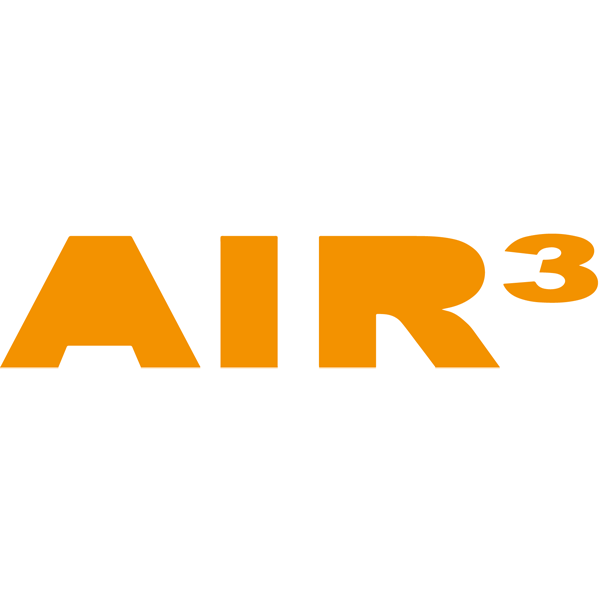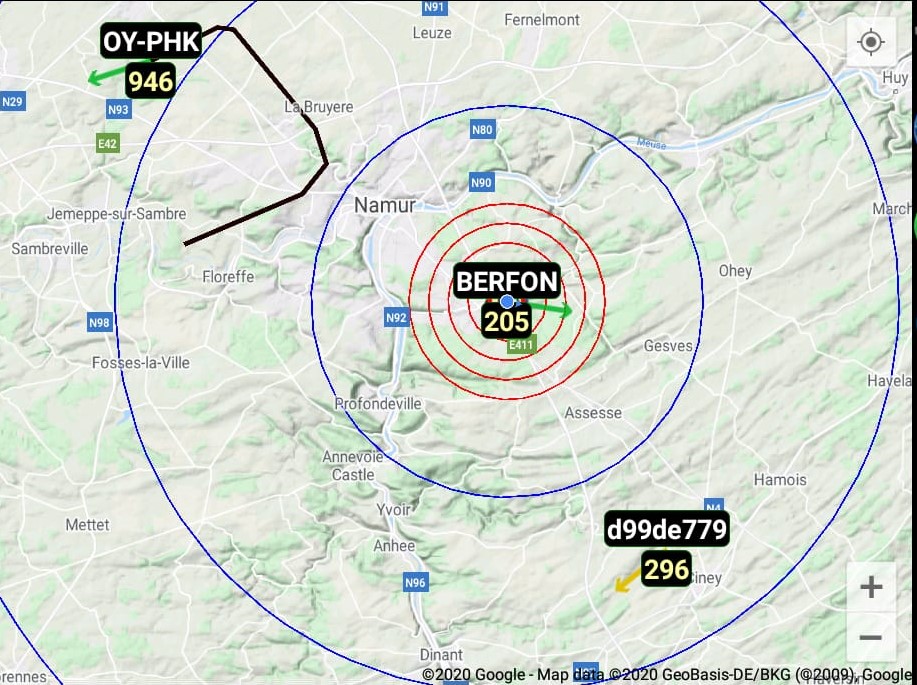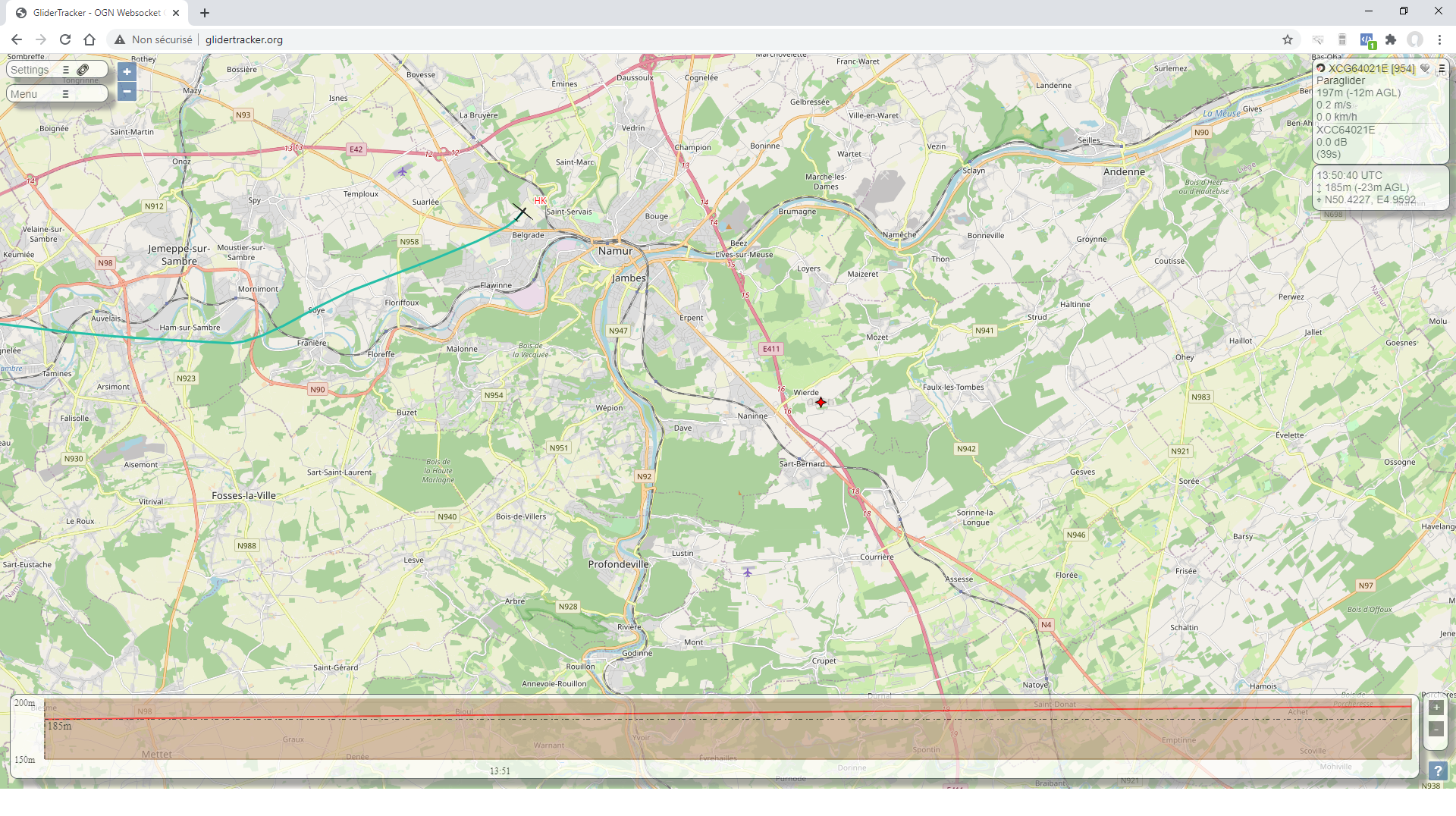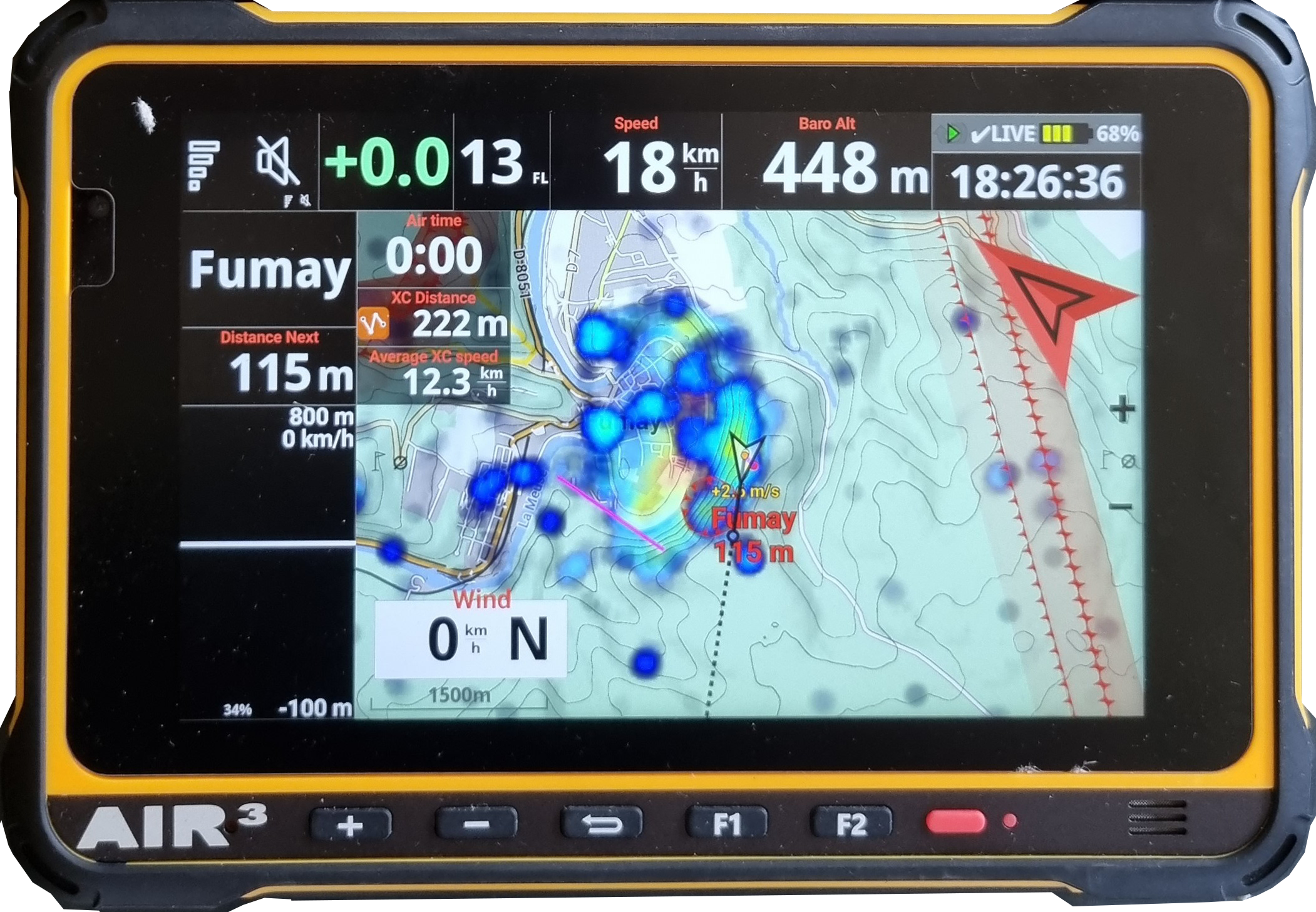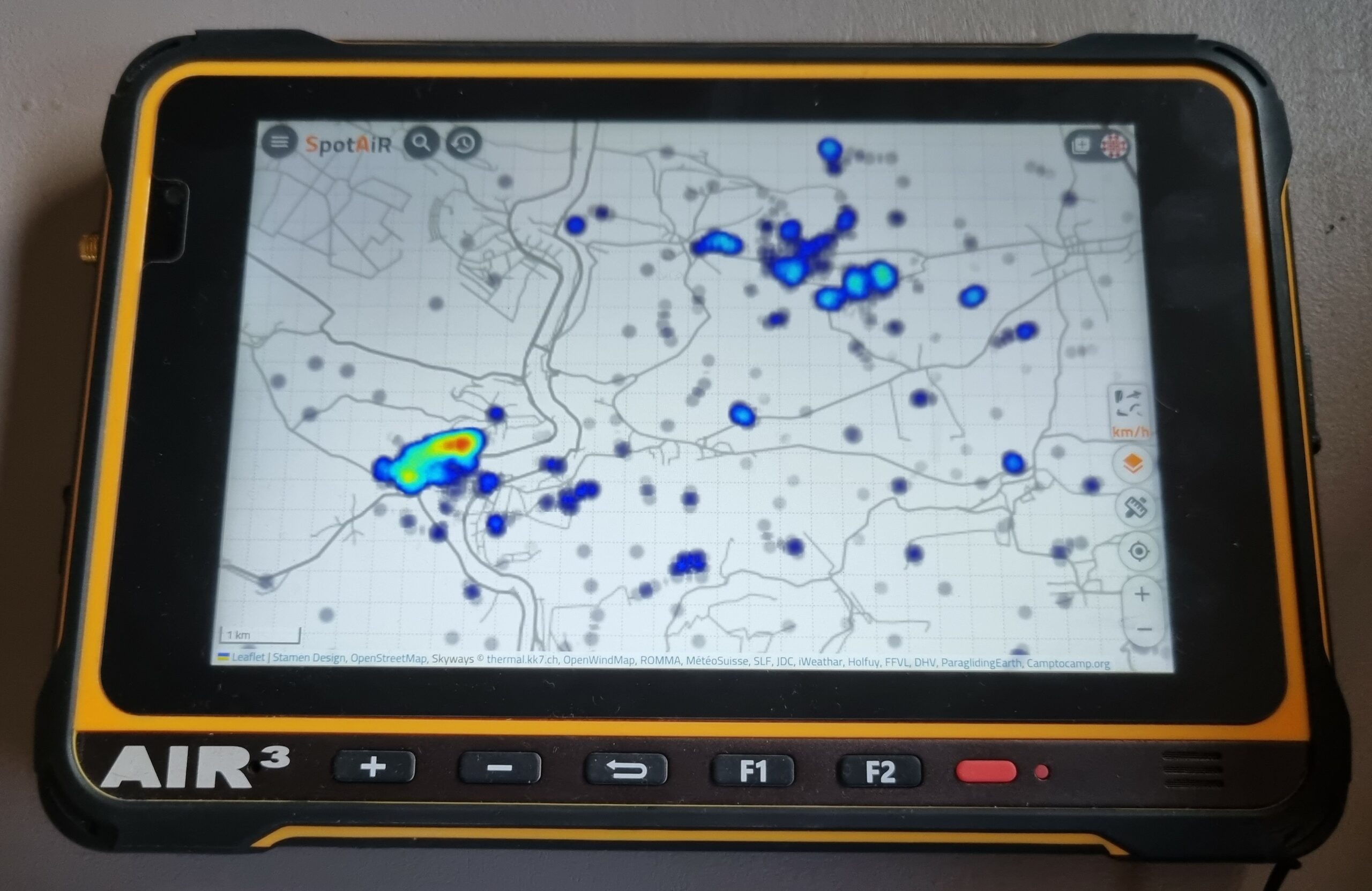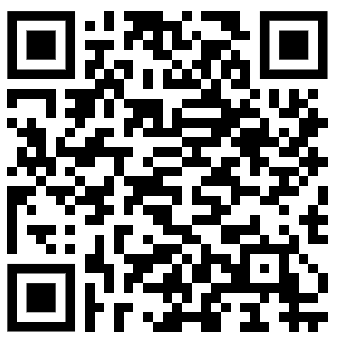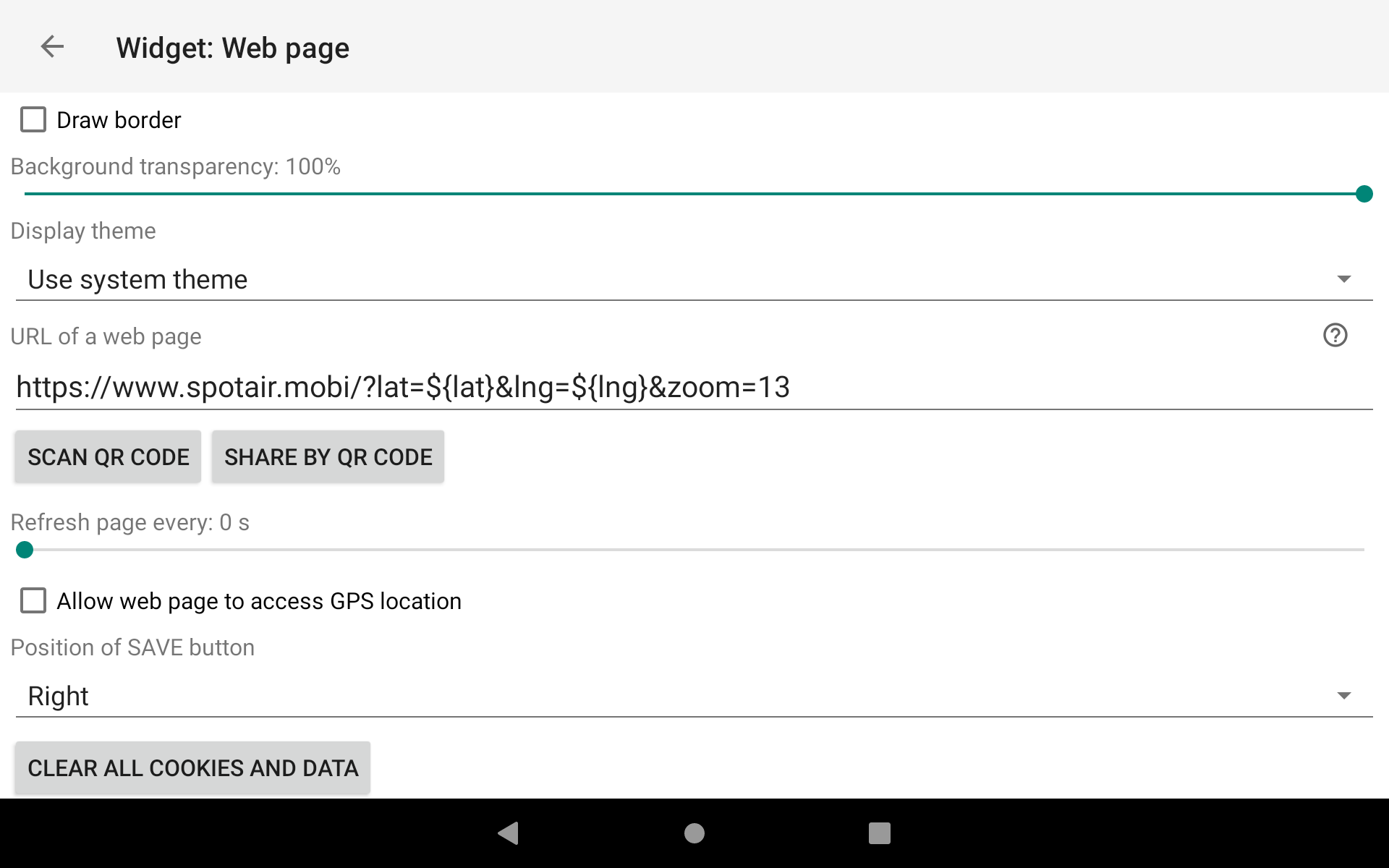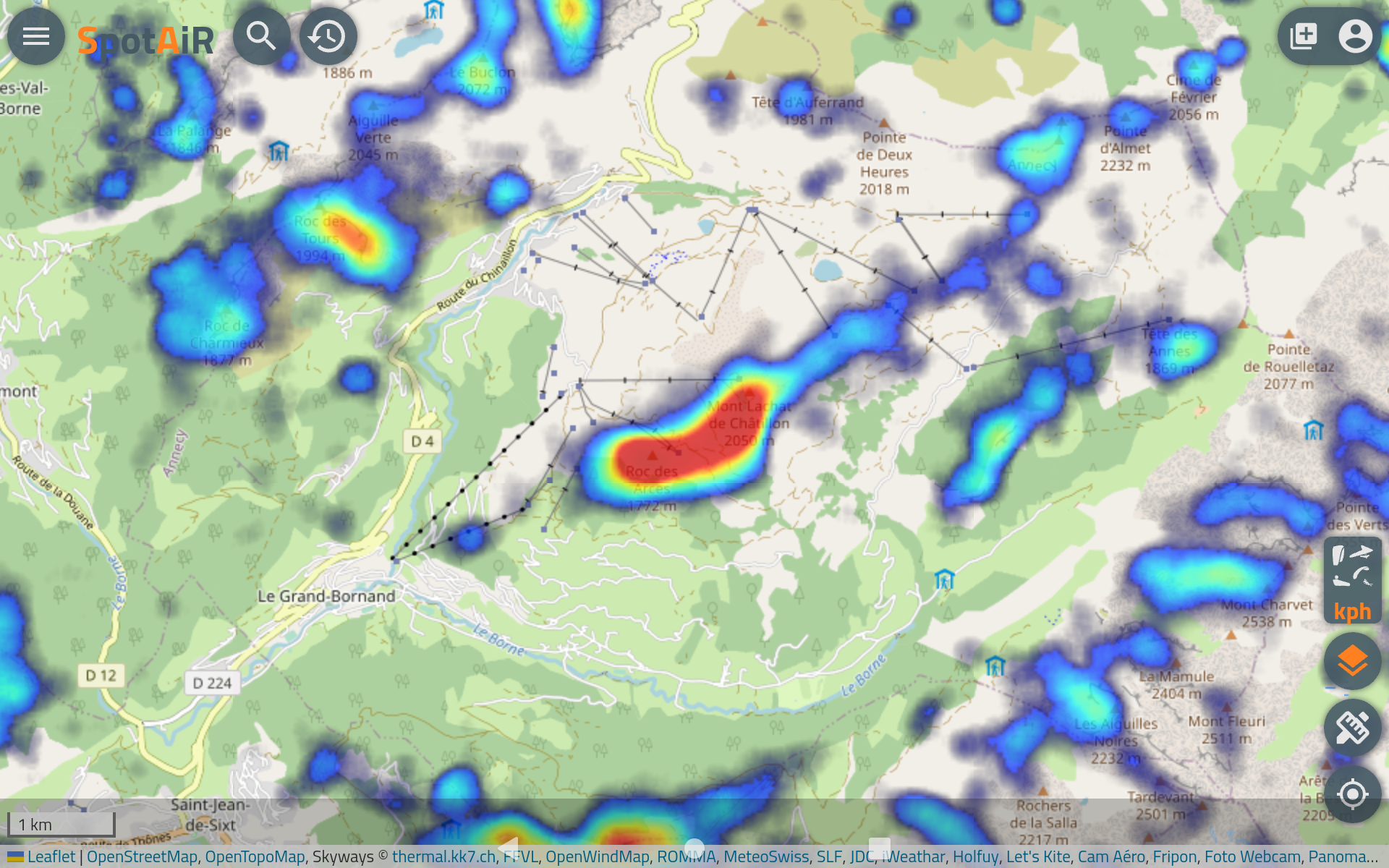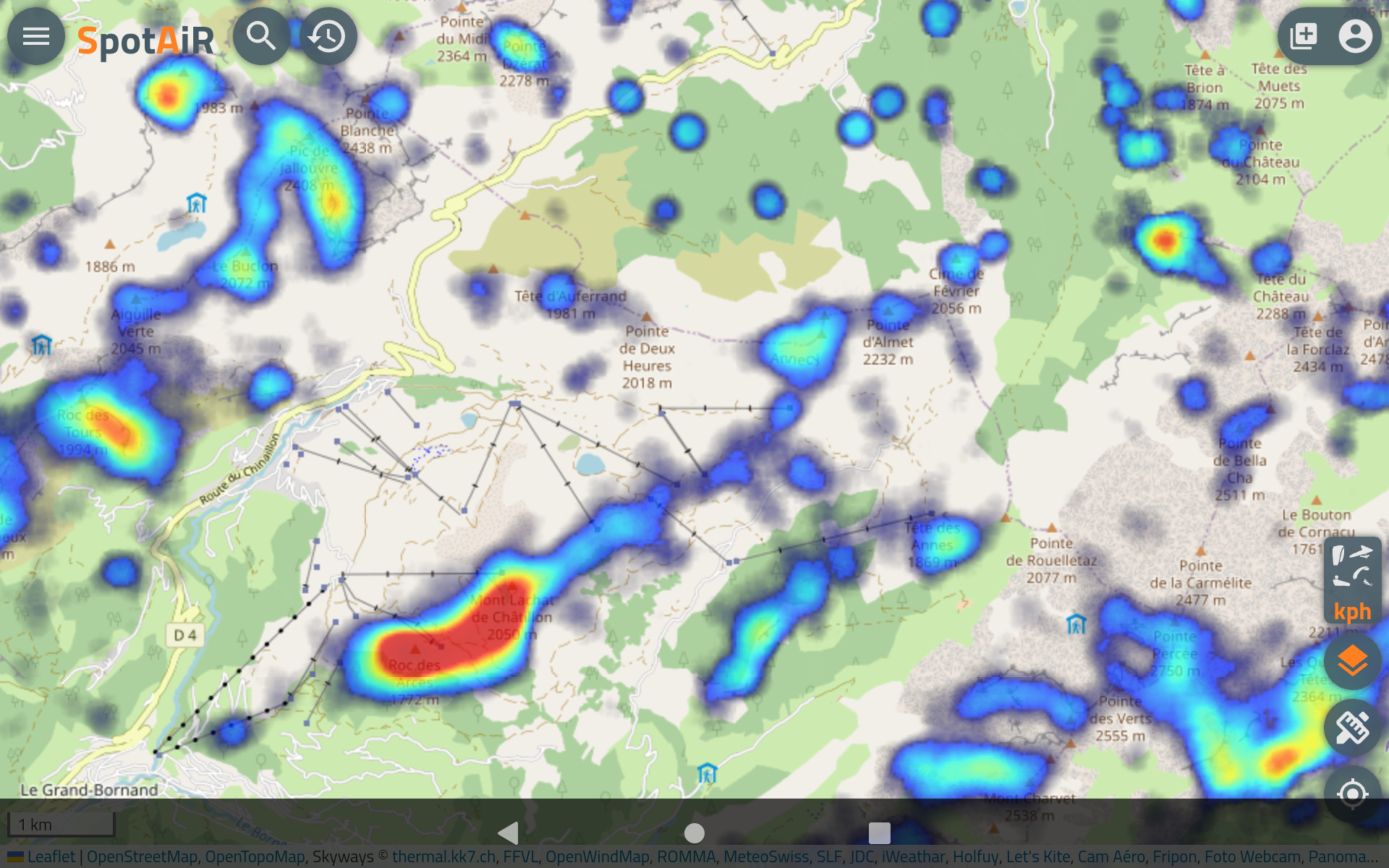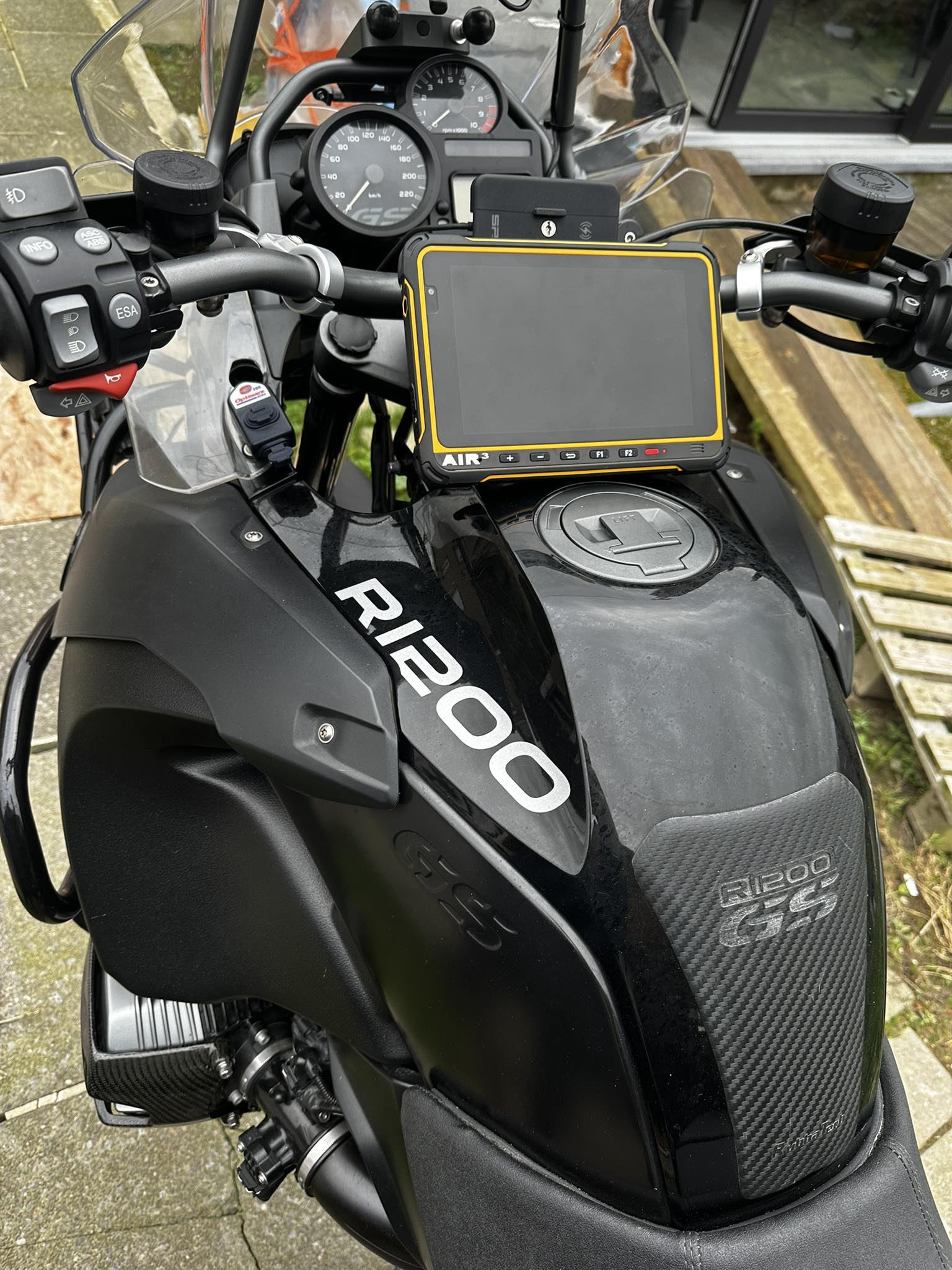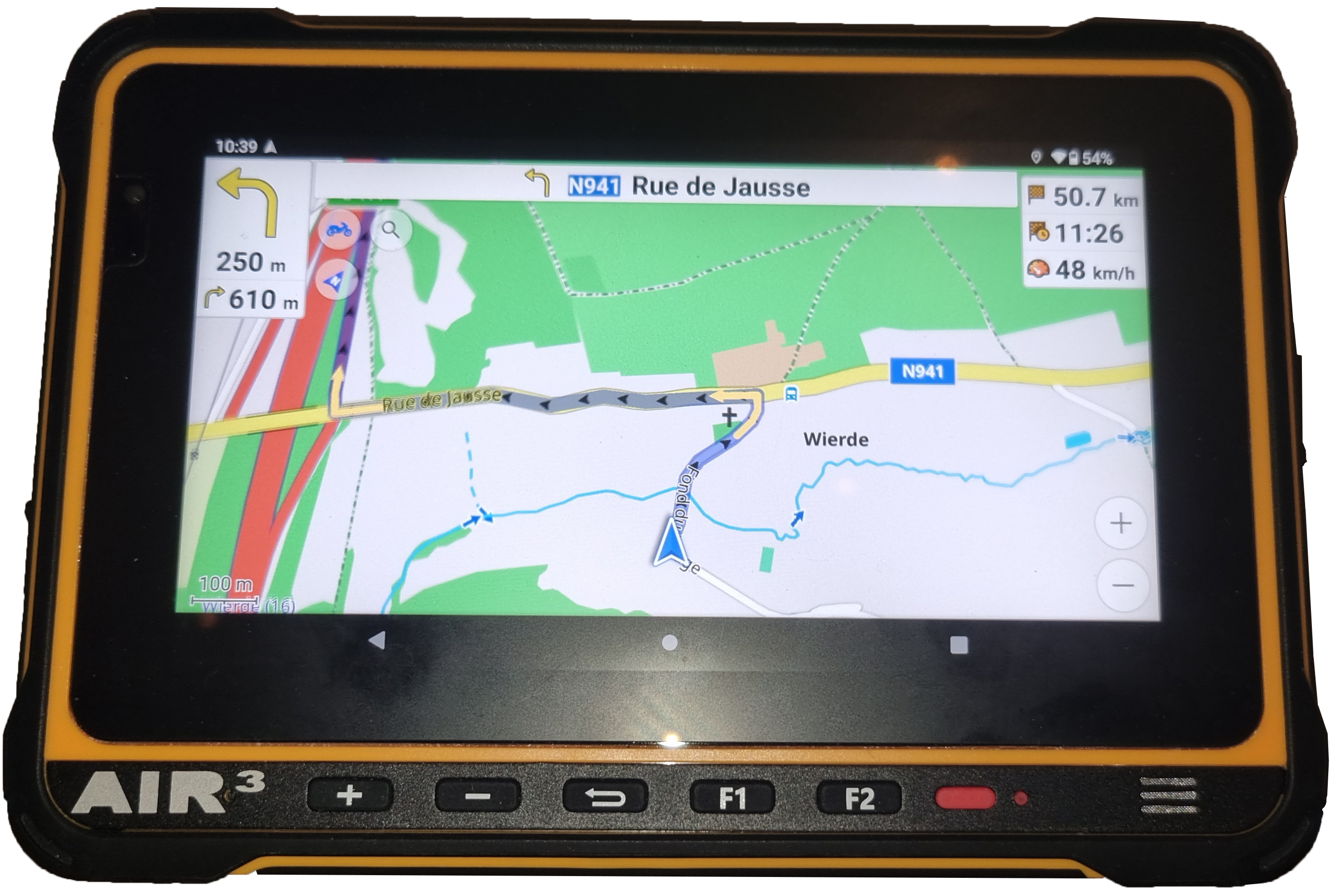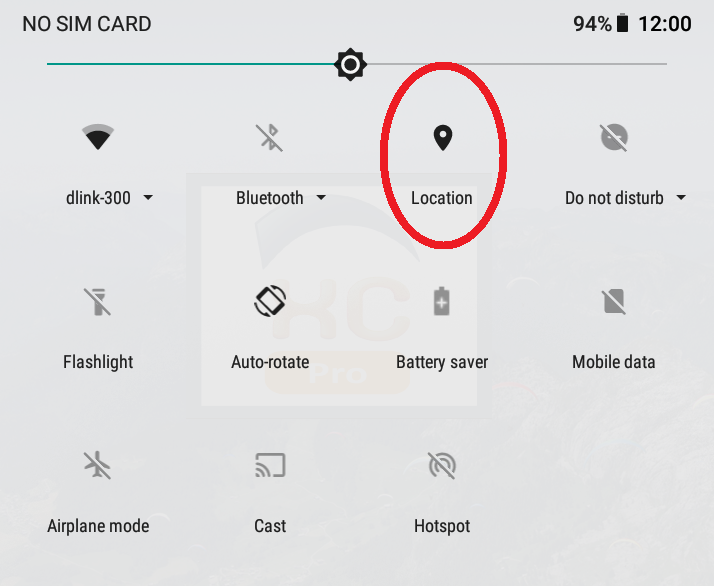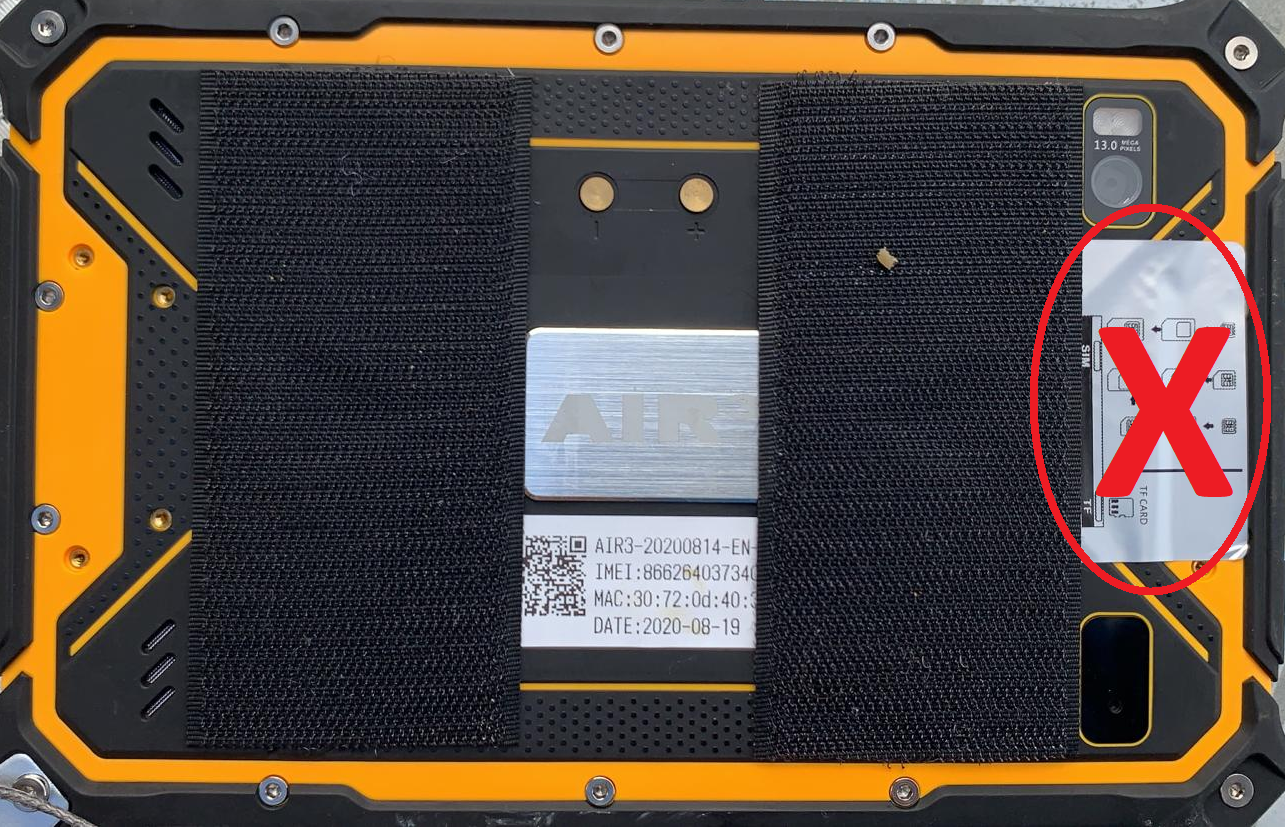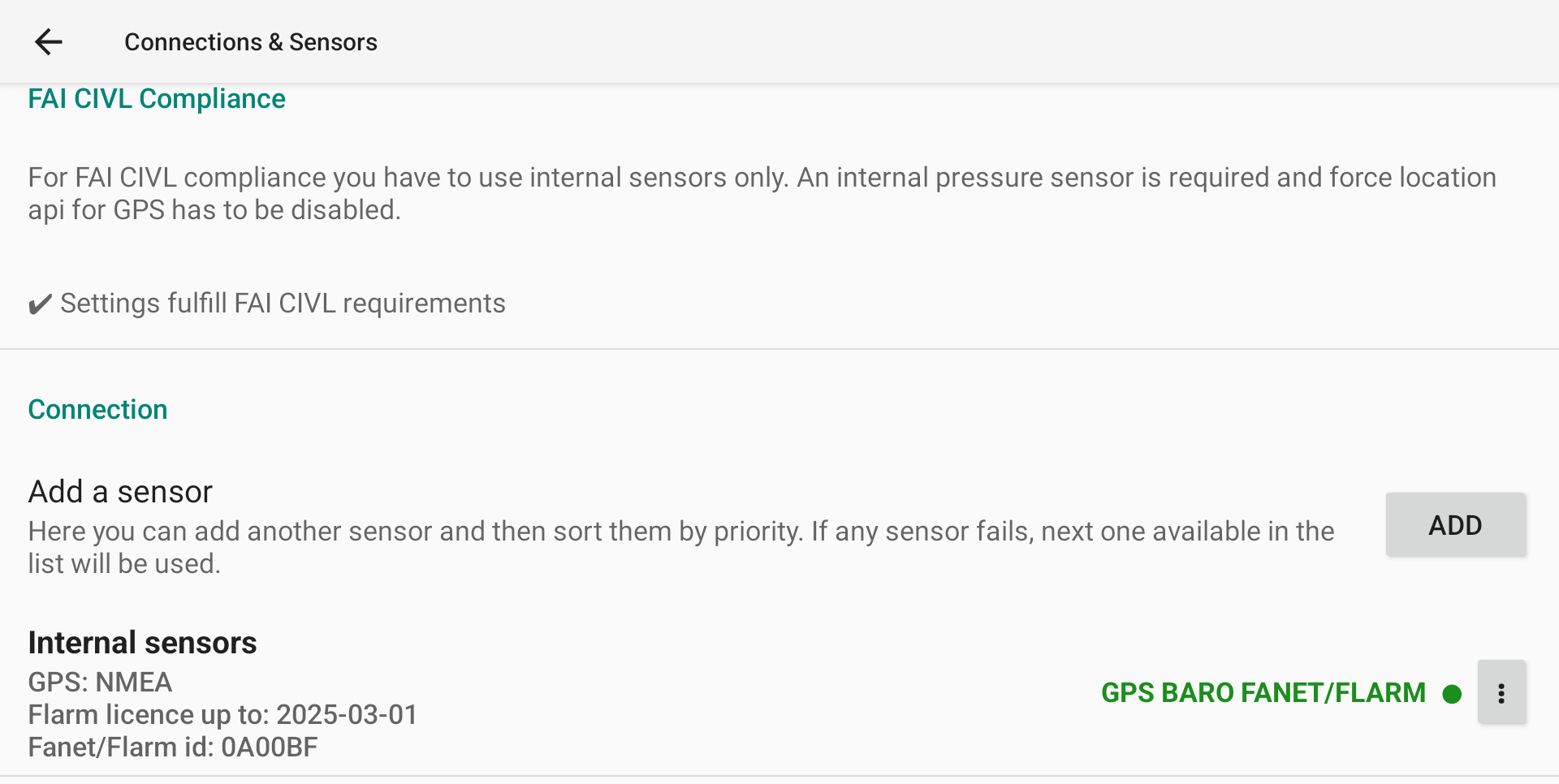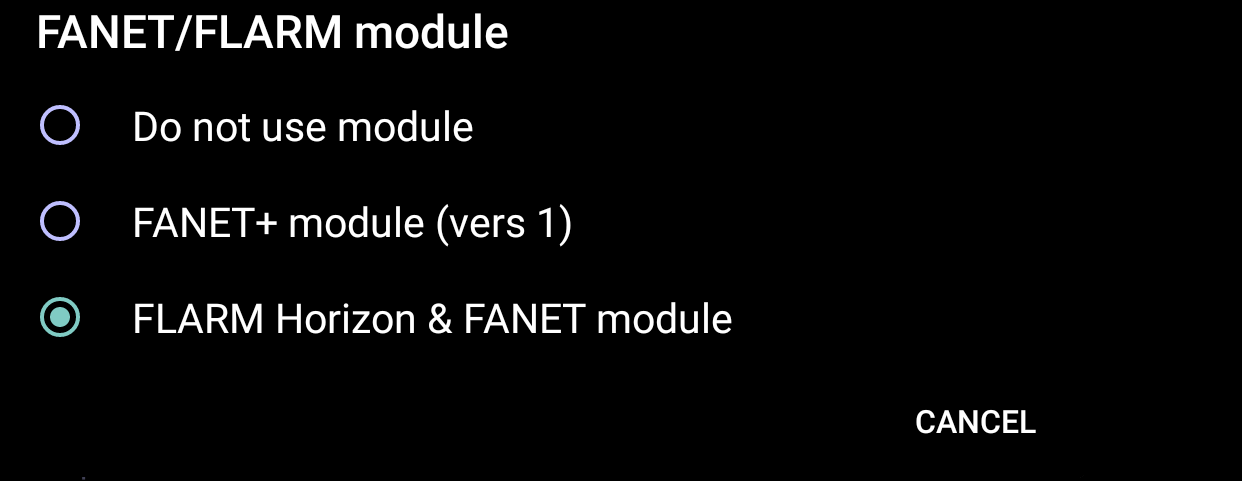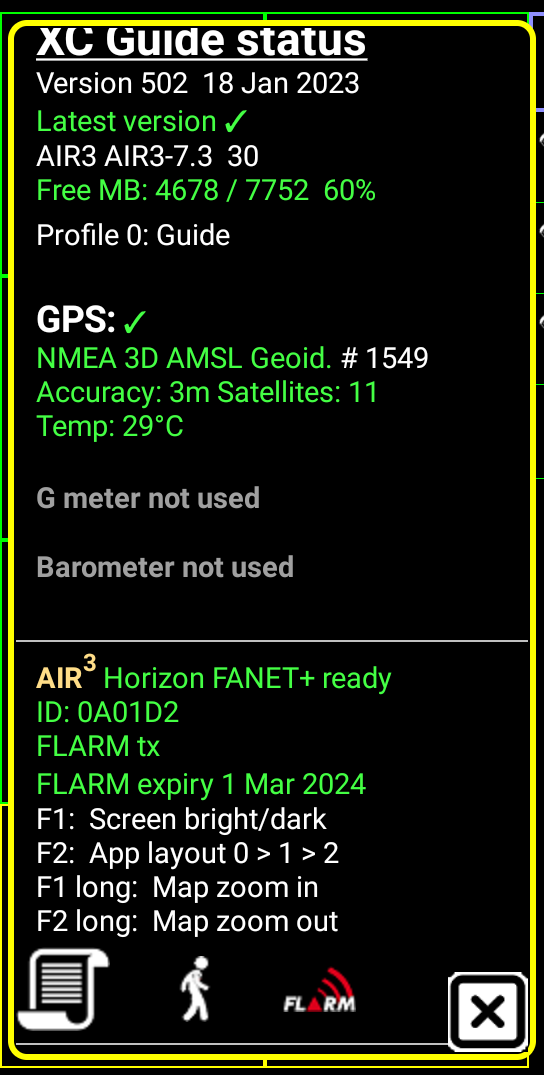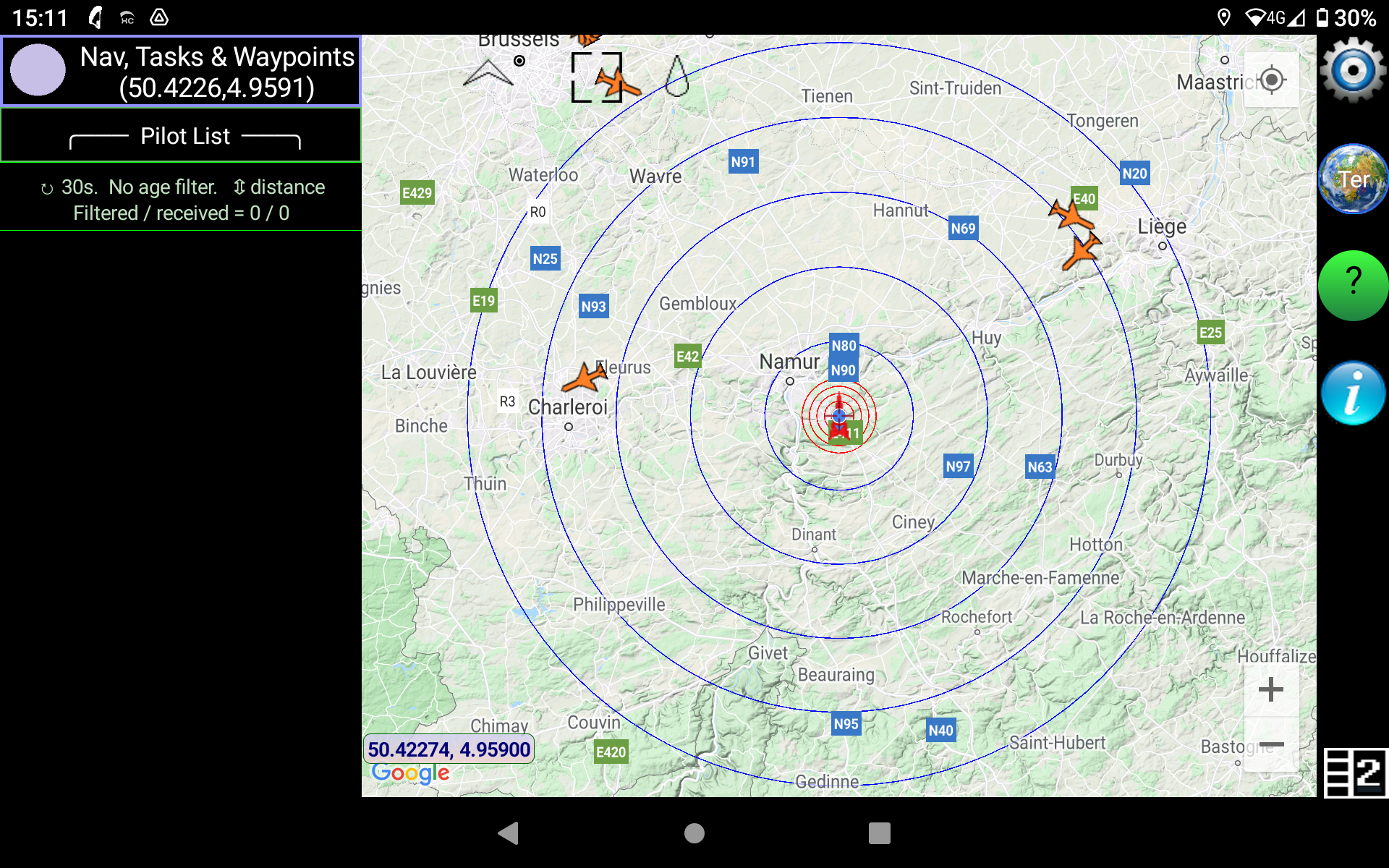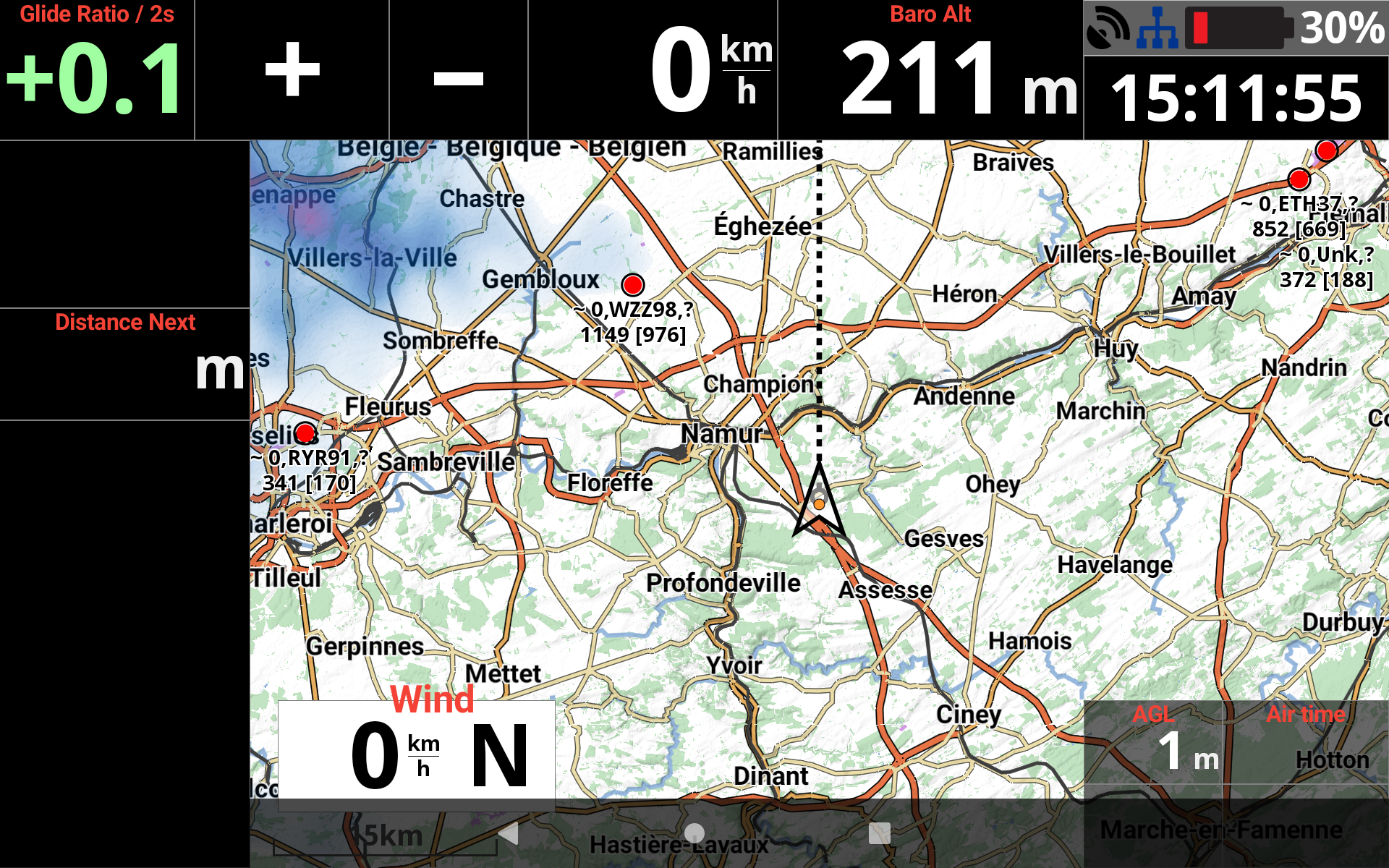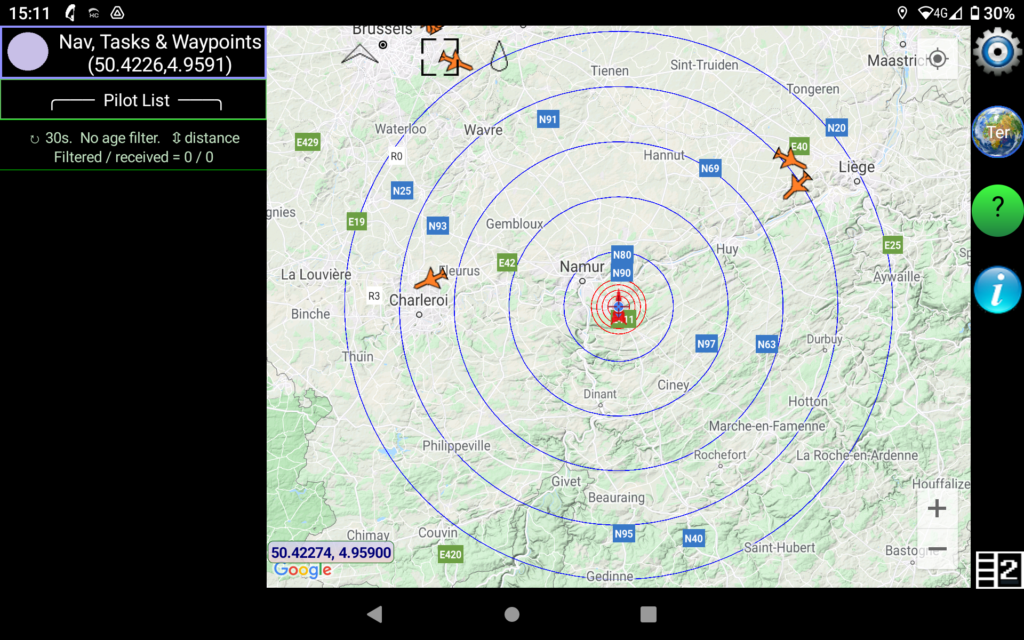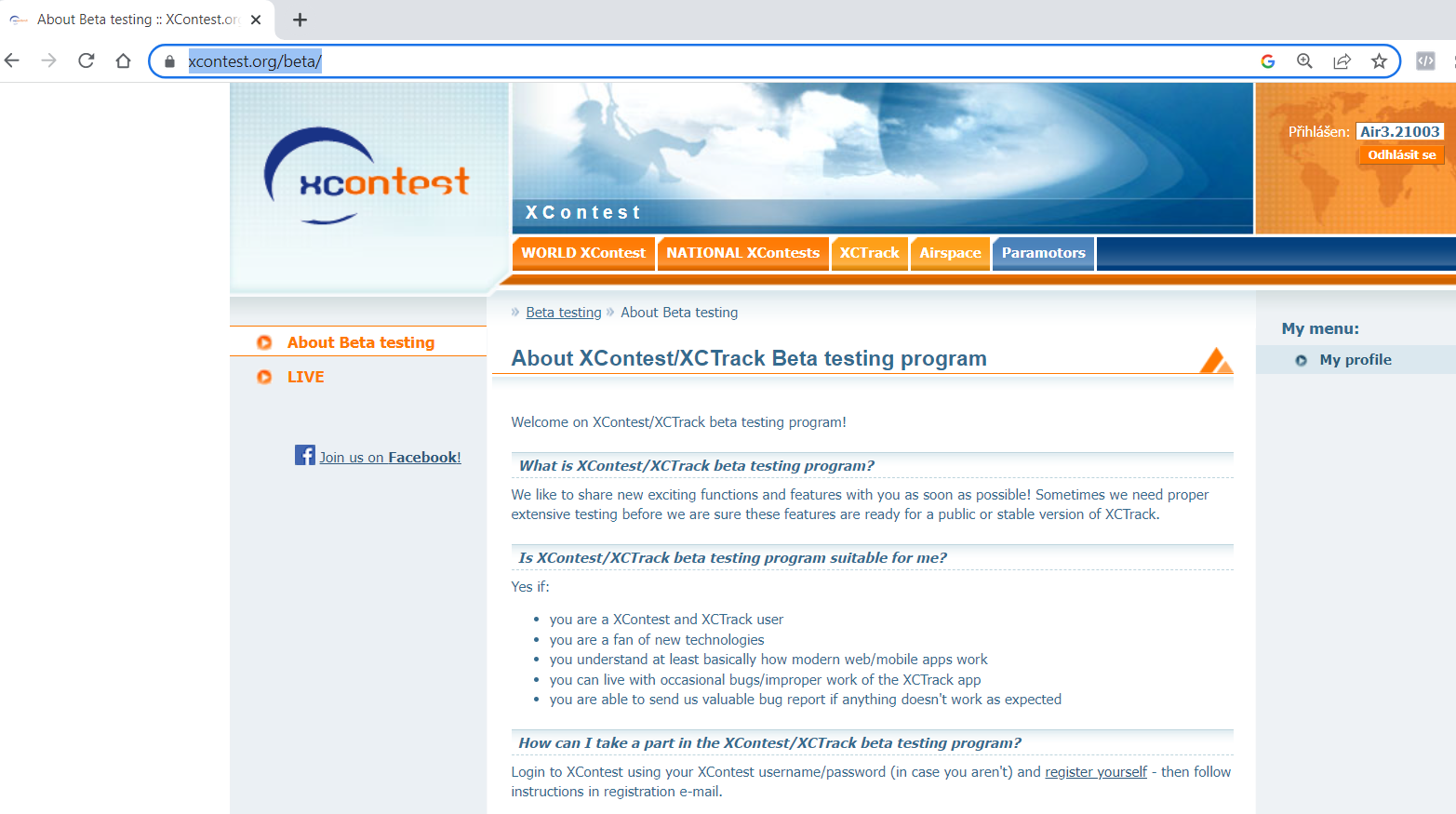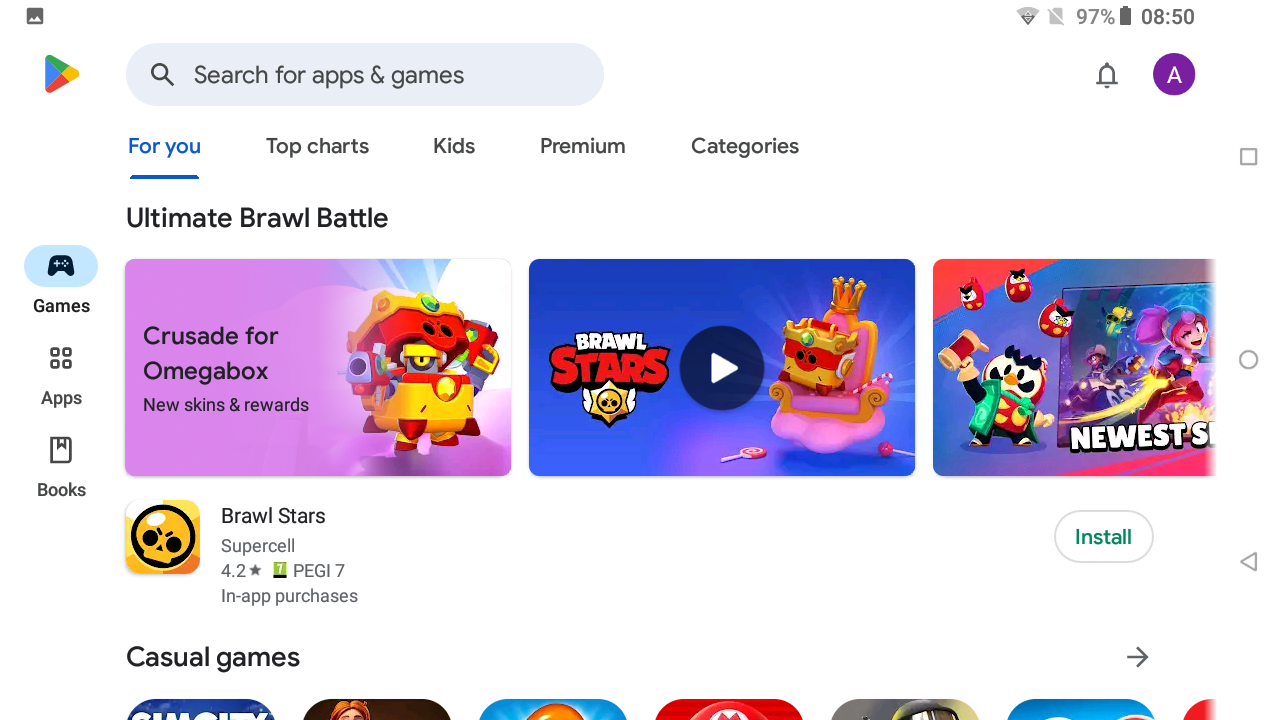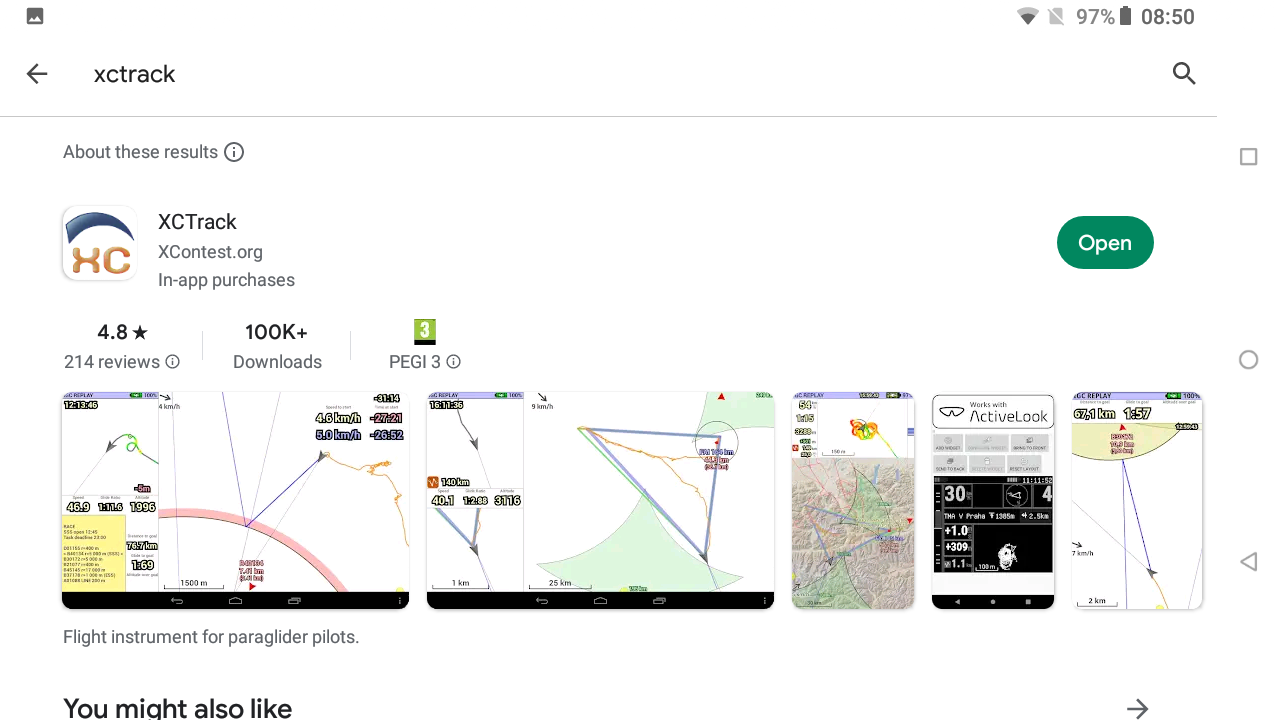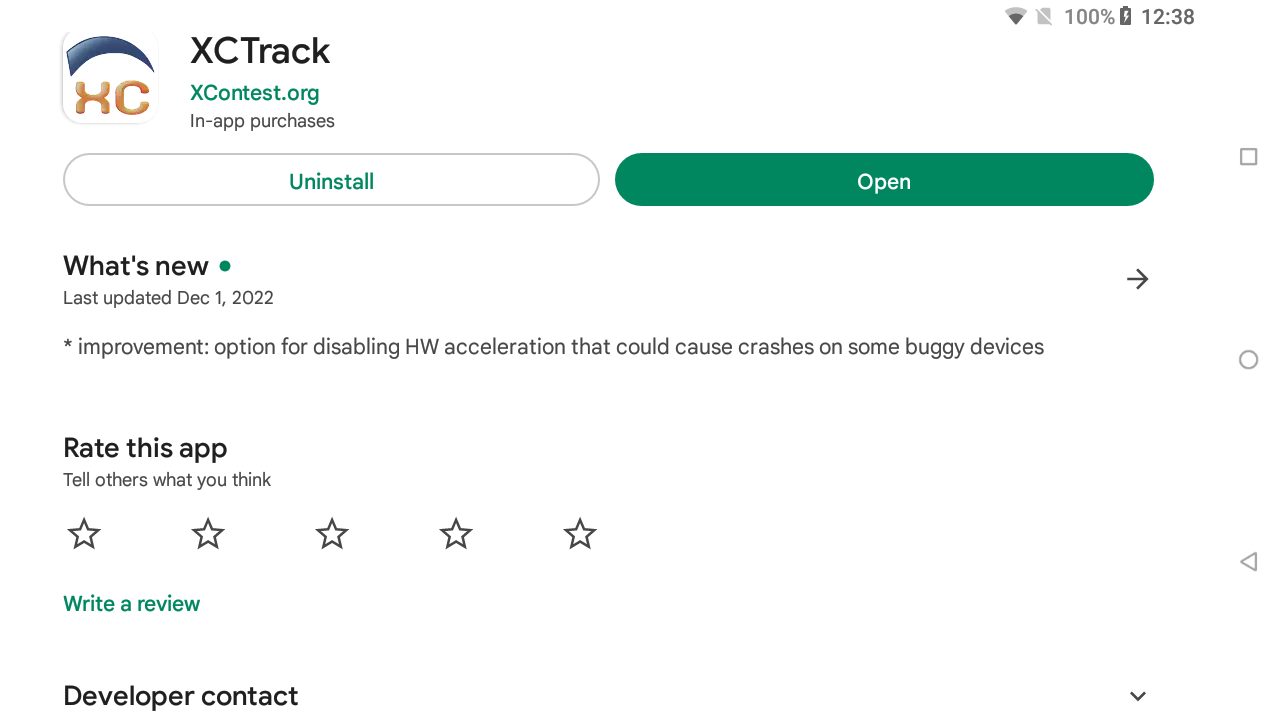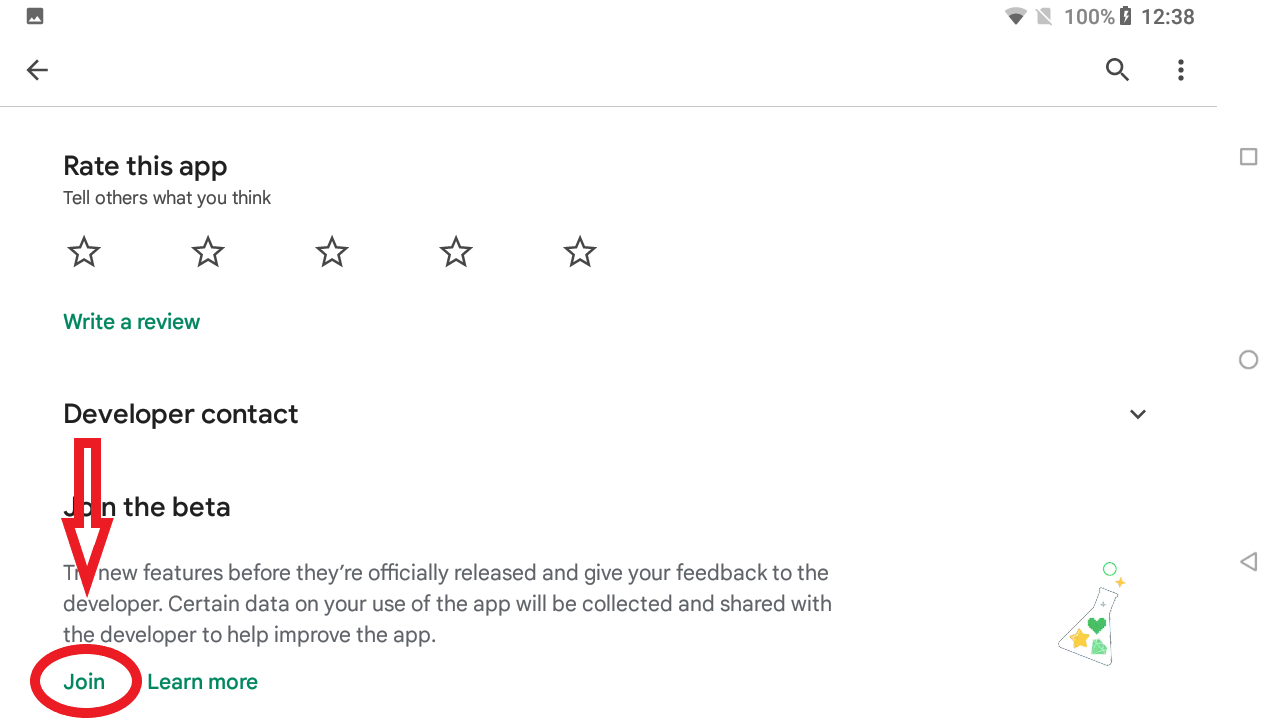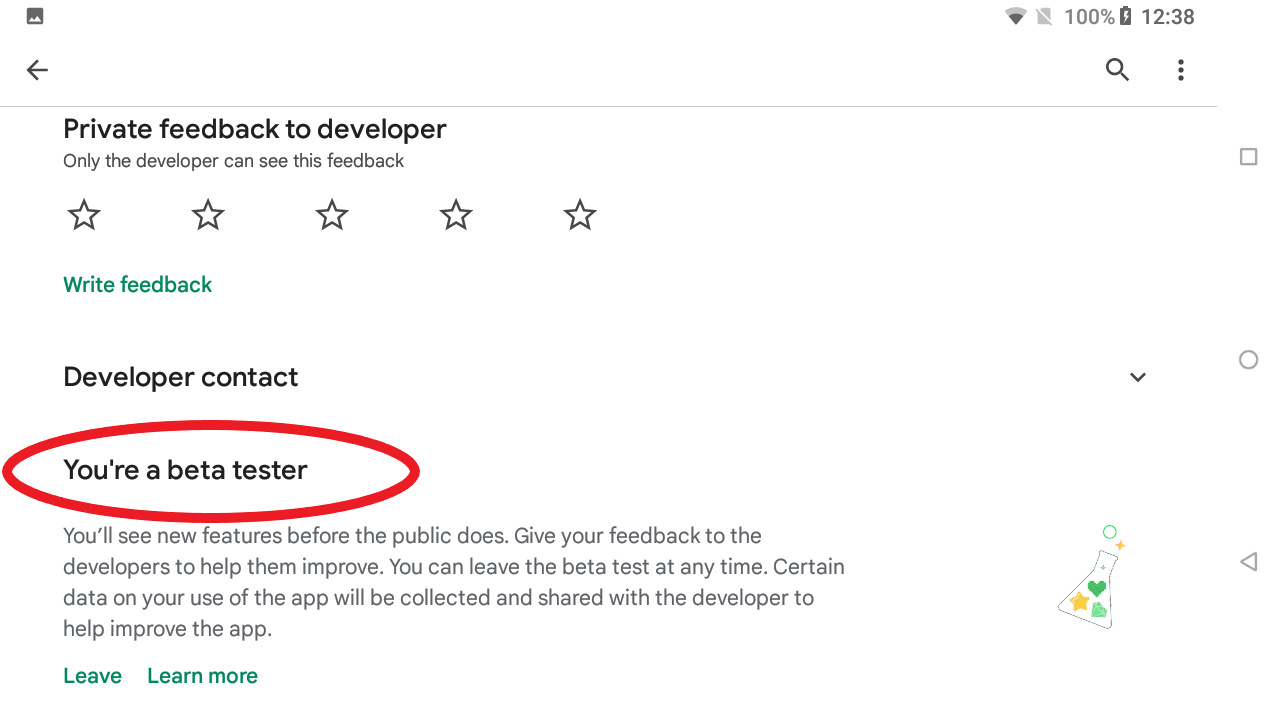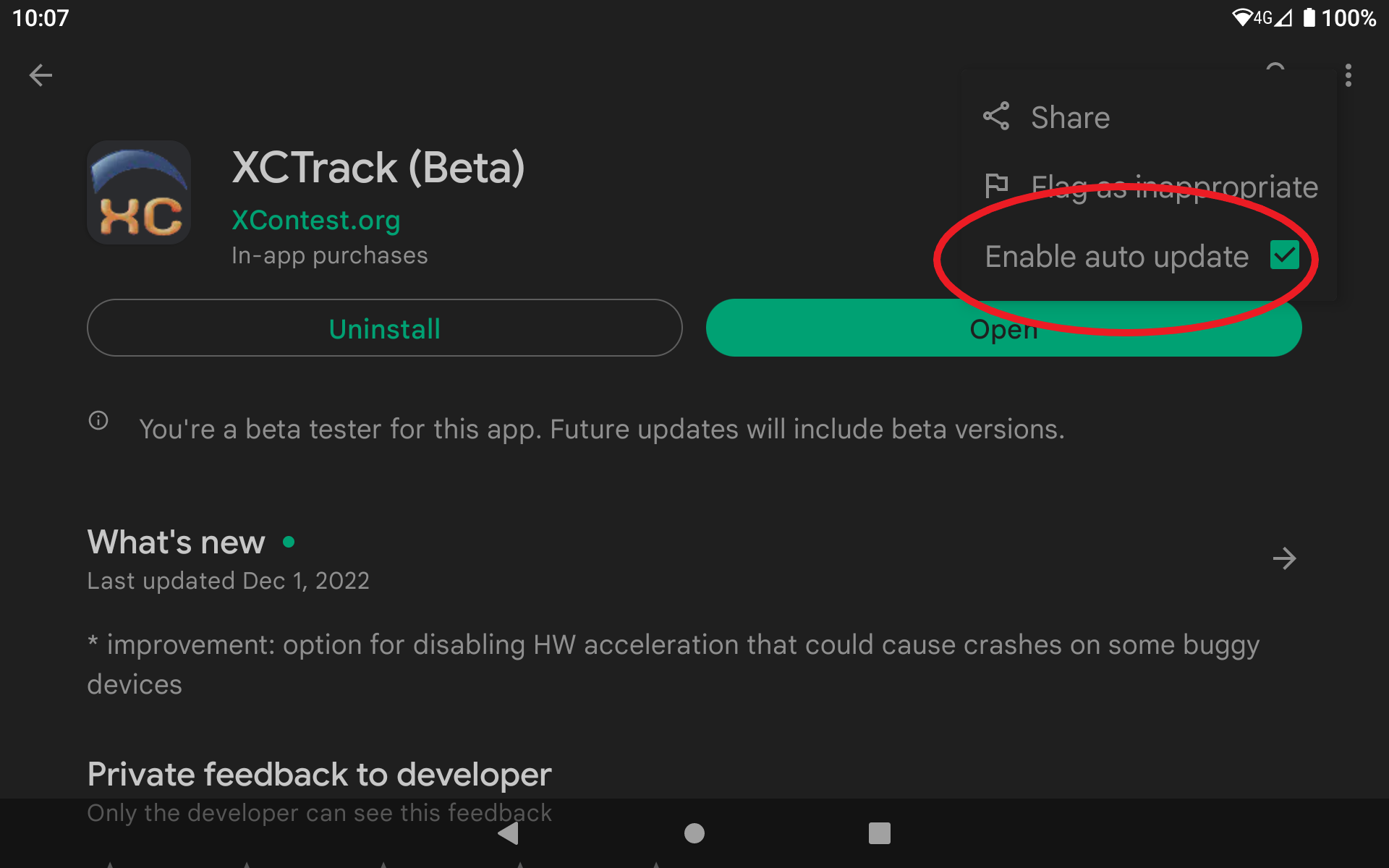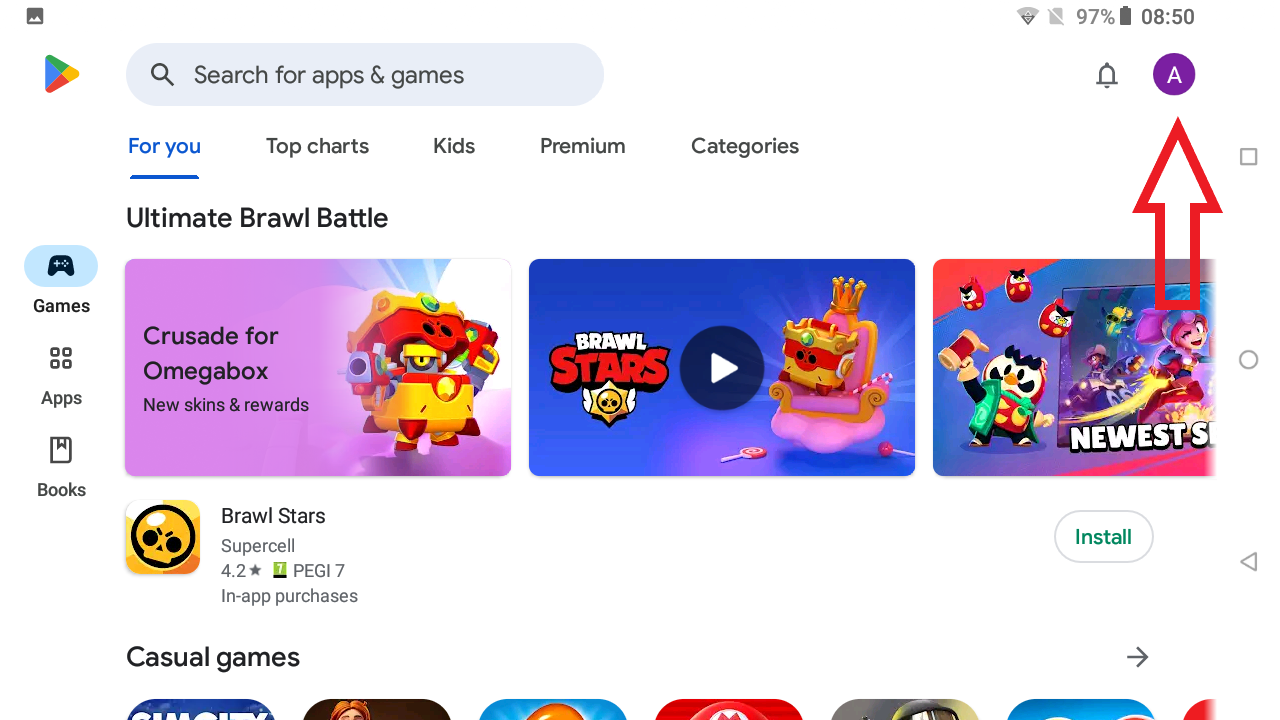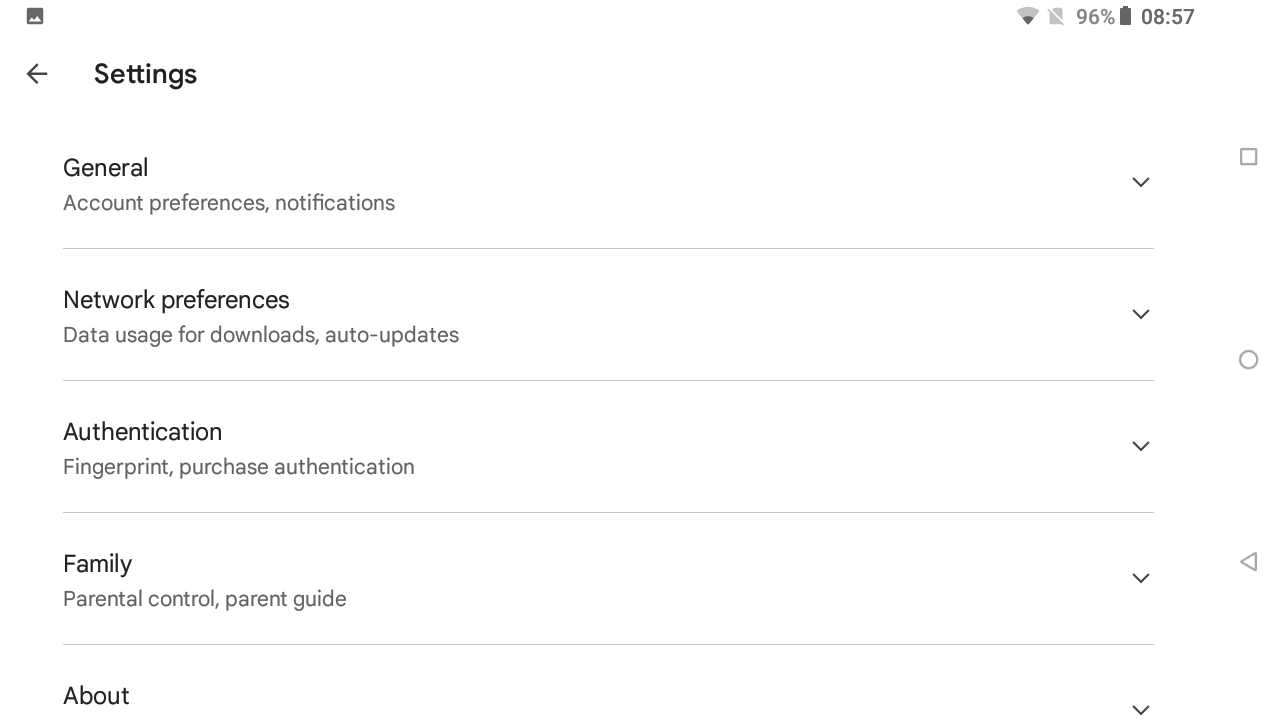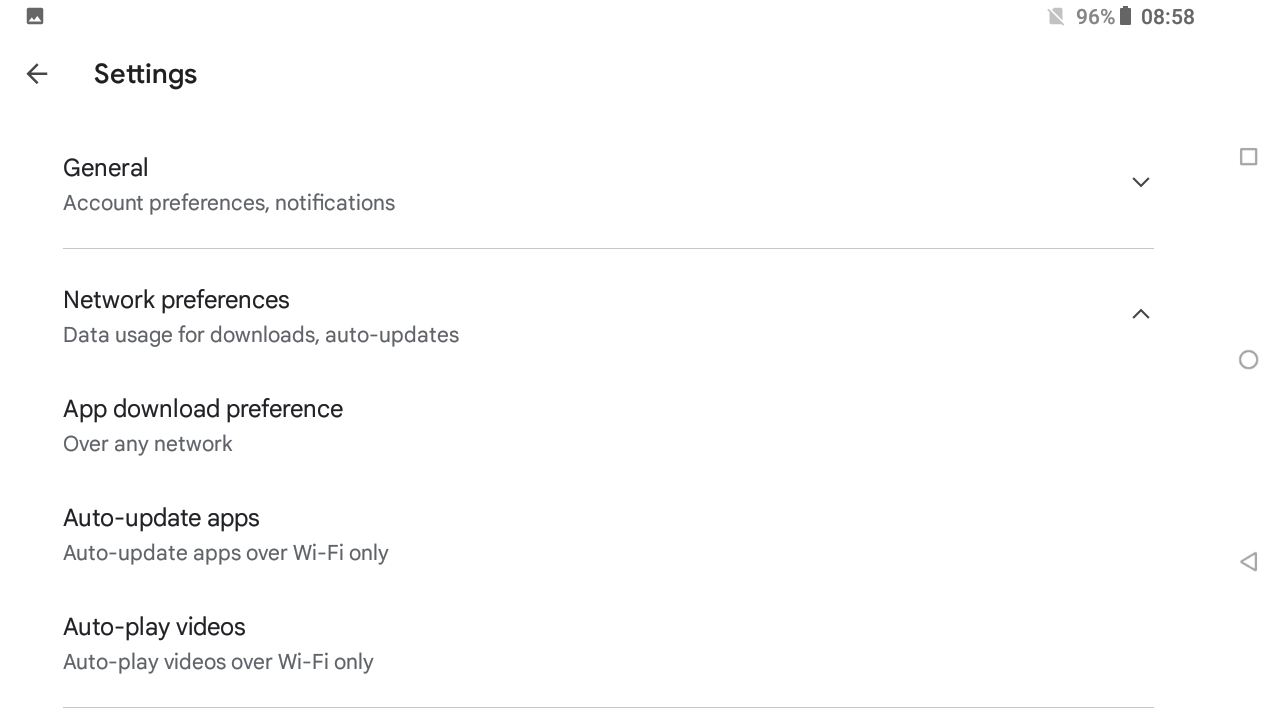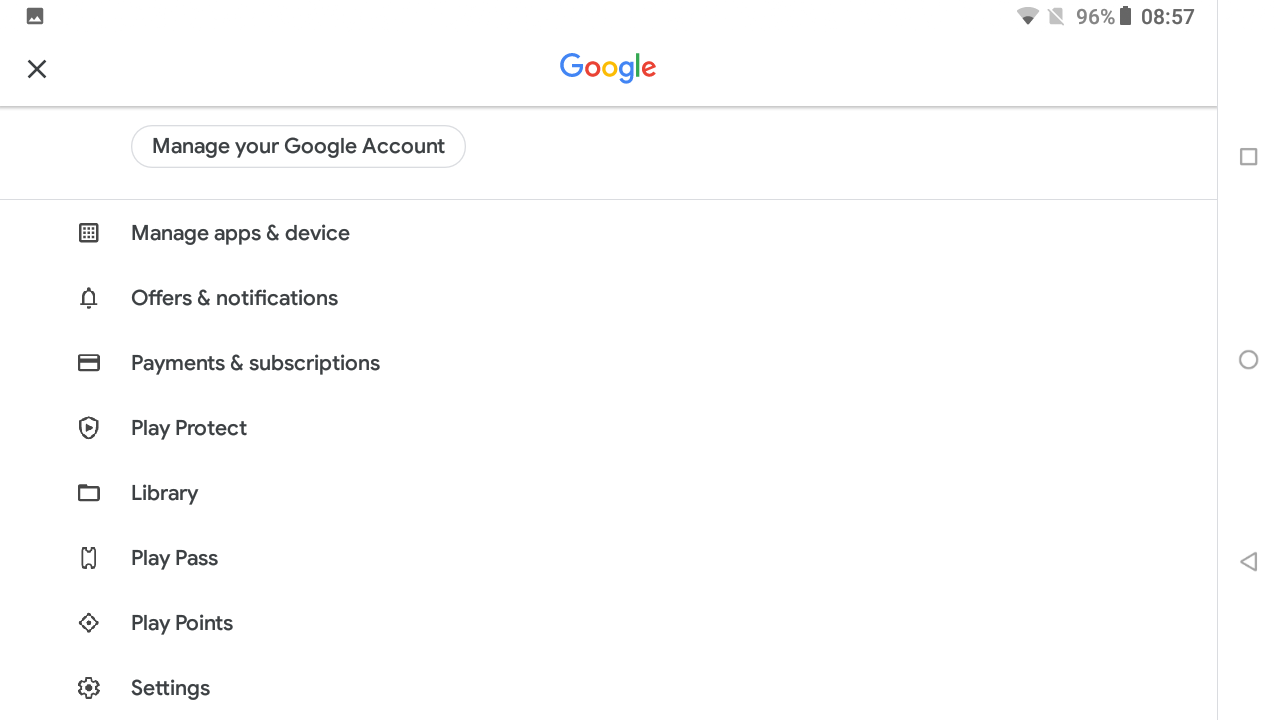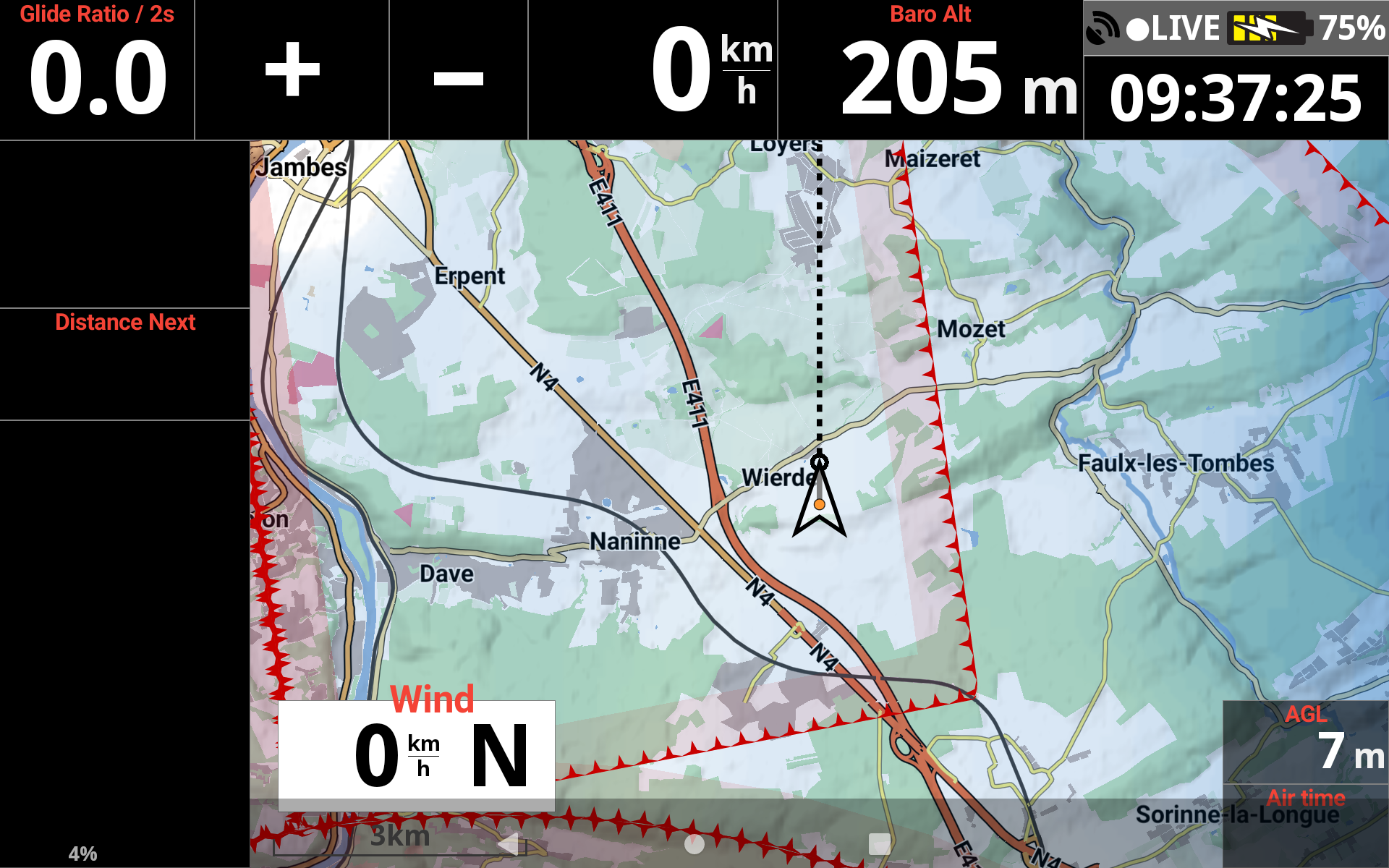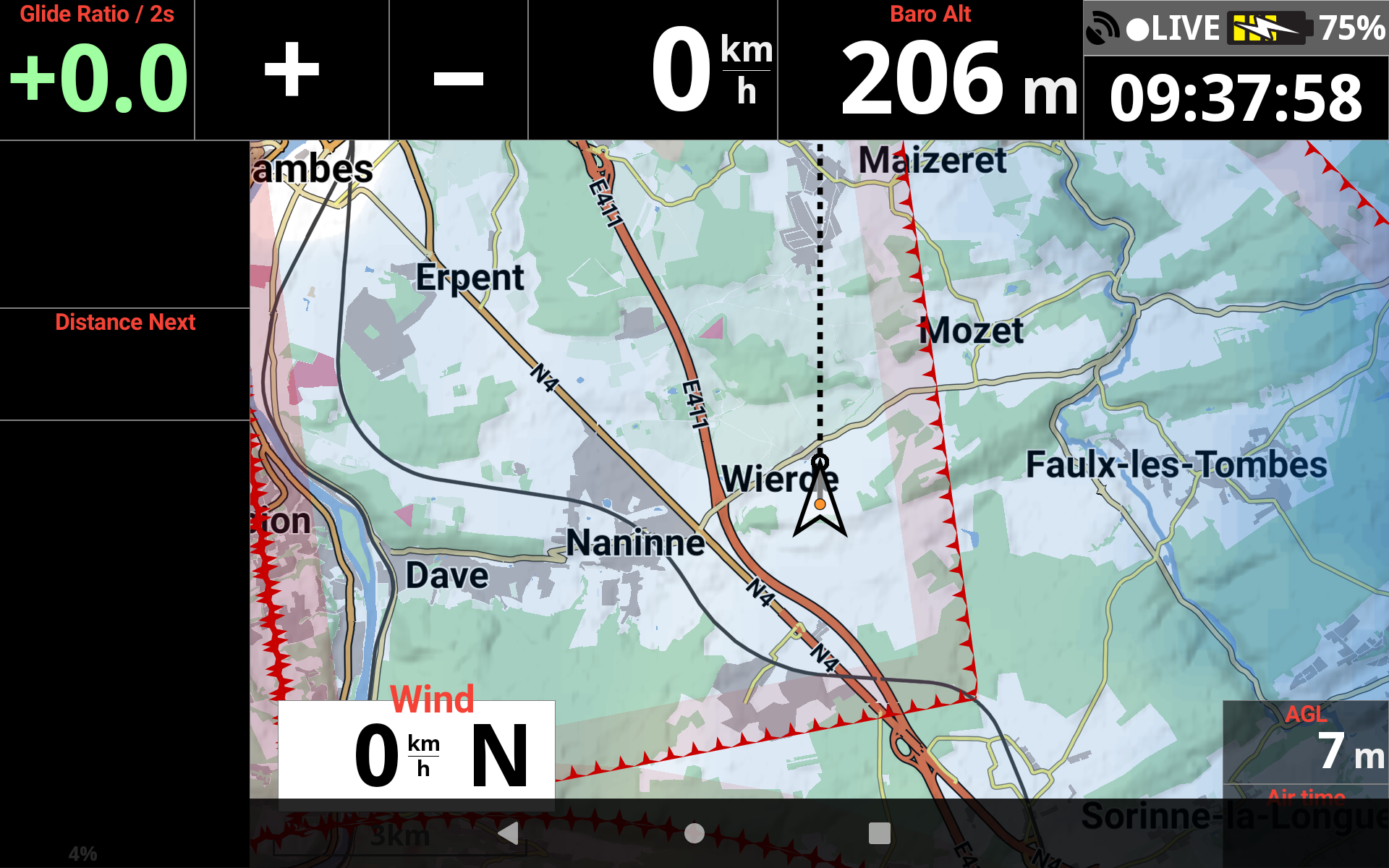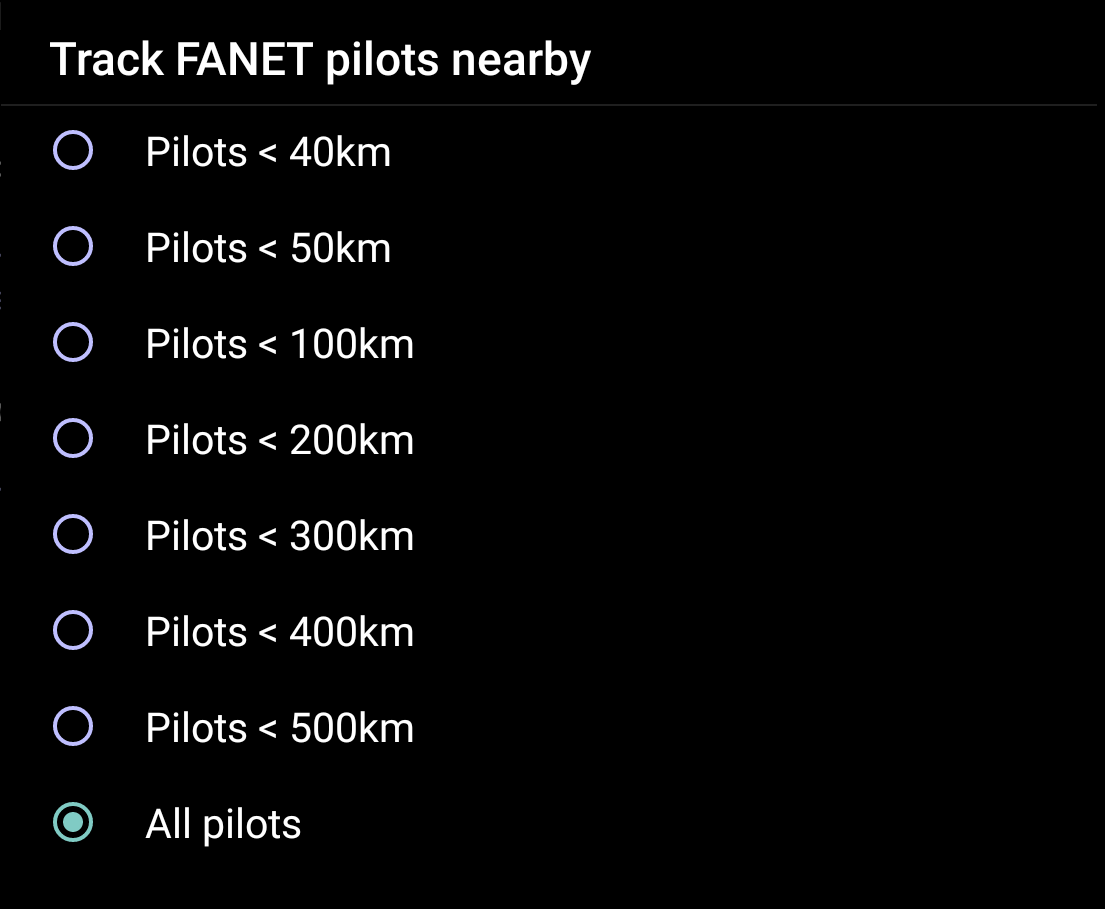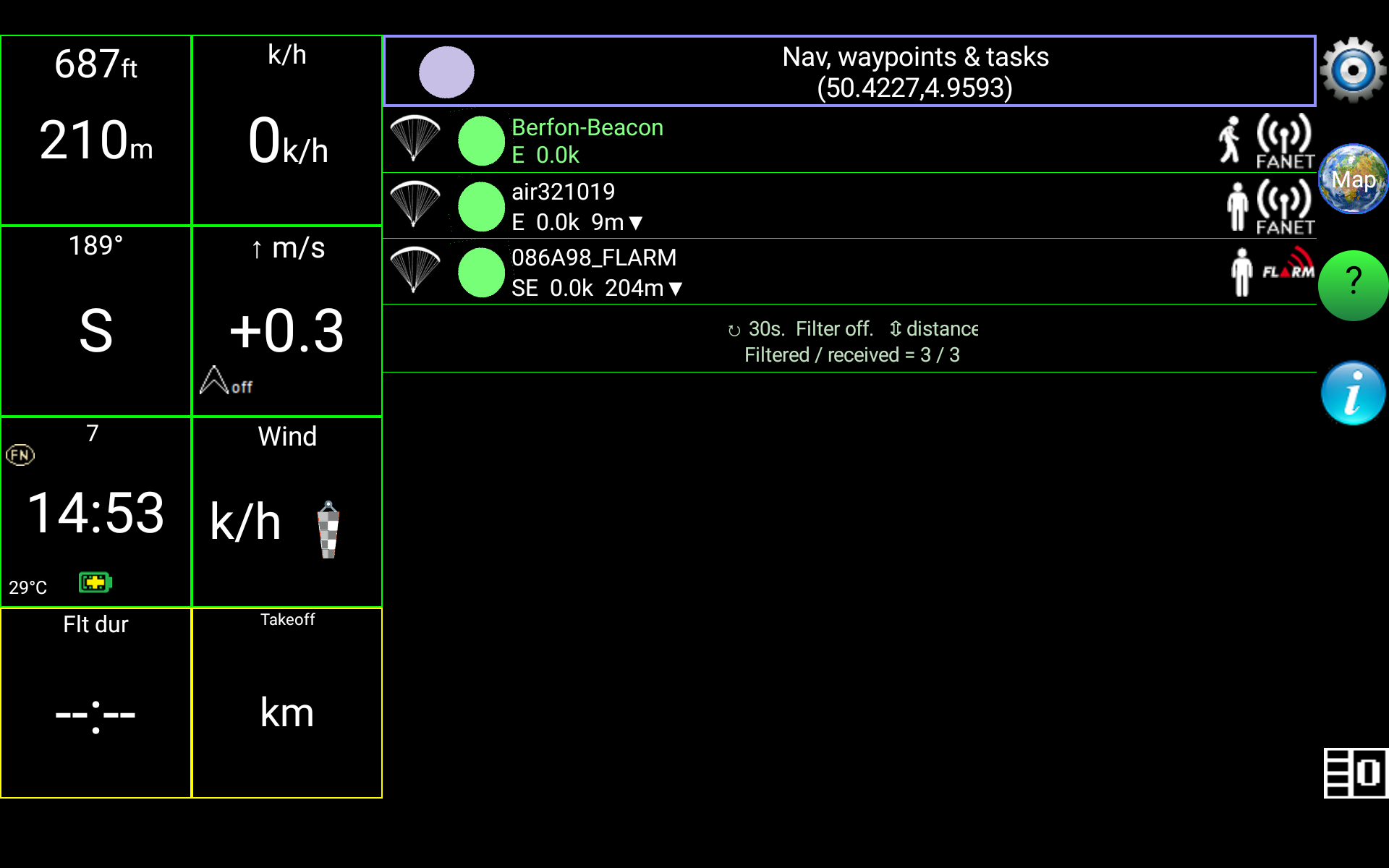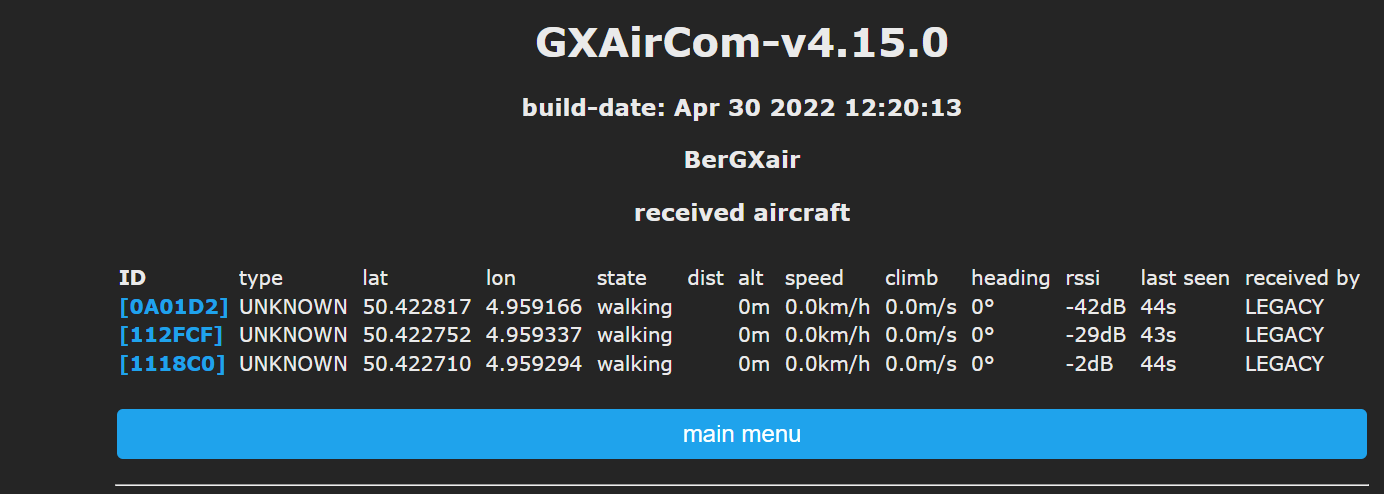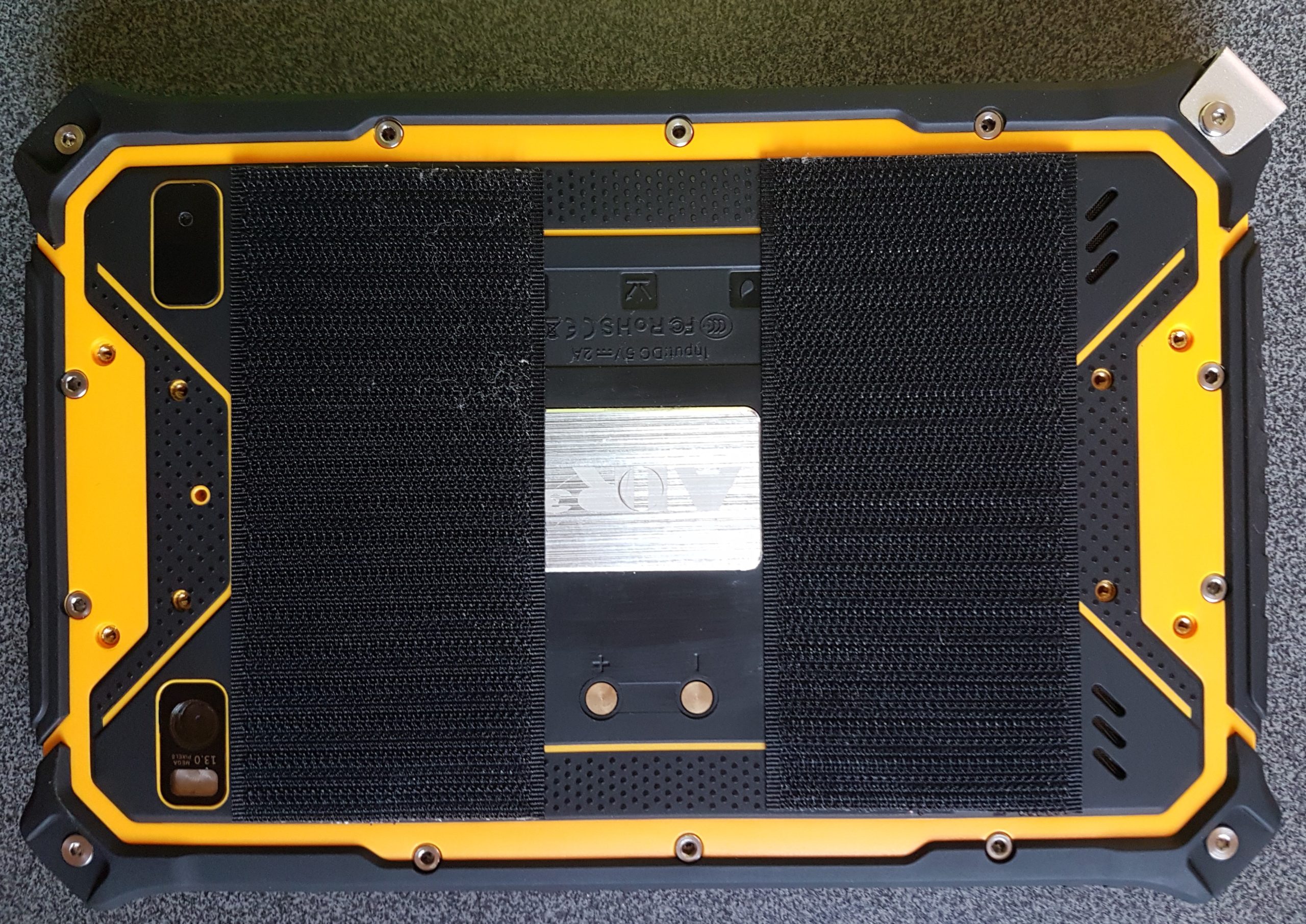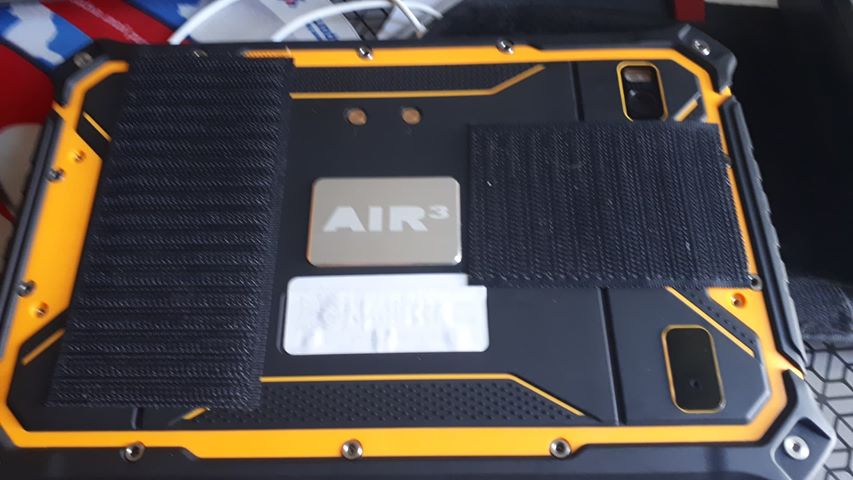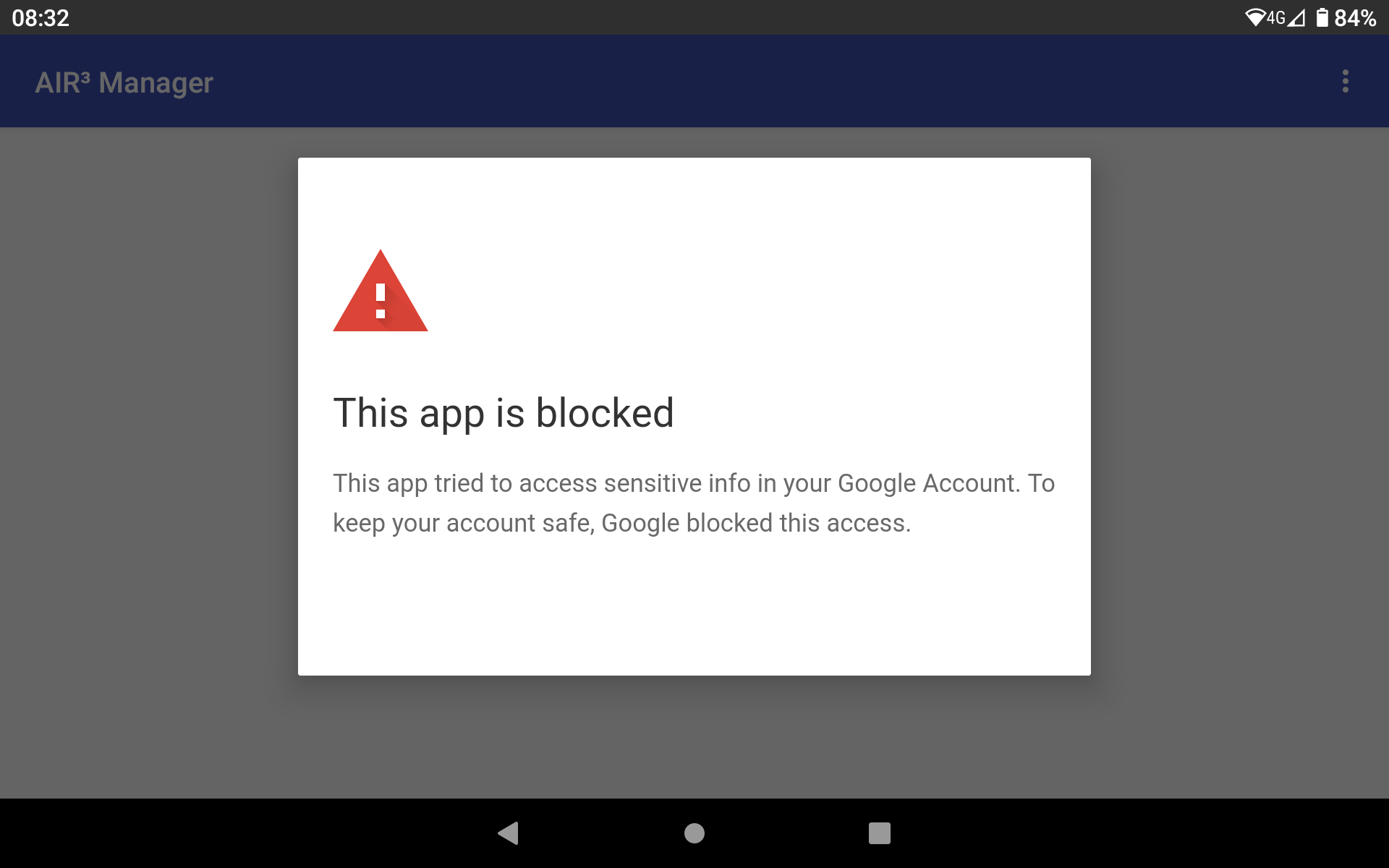Check this FAQ to know more about battery life and maintenance.
Check this FAQ to know more about the best brightness setting for AIR³.
Check this FAQ to know more about readability.
AIR³ 7.3 and Air³ 7.35 have a battery of 10.000 mAh. This gives AIR³ a pretty large autonomy. So, how many hours does it mean?
To give a straight quick answer: 10 hours for AIR³ 7.3 and 12 hours for AIR³ 7.35. But, read more details below to better understand the ins and outs.
Well, the autonomy can be influenced by many parameters. This means the autonomy is not a fixed number of hours.
A first factor that can influence battery life depends on how the battery has been initialized. As explained in this FAQ regarding battery maintenance, the battery capacity is optimal when performing 3 full charge and discharge cycles for the first time.
Using a black theme increases by 30% the autonomy. Not everybody likes it,… but it uses much less energy. This is why AIR³ is preconfigured with an hybrid Black theme with white maps.
The main factor that influences the autonomy is the brightness level.
Most of the time, when using a smartphone outside, the brightness is set to maximum. Otherwise, information is hardly read. This is the case because the screen brightness is weak on such device. This is not the case for AIR³. The FAQ related to the best brightness setting gives you more details about the link between brightness, readability and autonomy.
AIR³ 7.35 has a new screen that provides more brightness. In order to compare the devices, they should be compared on the basis of similar readability. In the following test, the AIR³ 7.3 at 80% brightness is roughly equivalent to the AIR³ 7.35 at 30% brightness. With 100% battery to start with, with dynamic brightness disabled to standardise the test, the AIR³ 7.3 has 9 hours of autonomy. The AIR³ 7.35 has 14 hours of autonomy.
CCL, using AIR³ in the recommended way (correct battery initialisation, dynamic brightness, dark theme), you should get 10 hours of autonomy with 7.3 and 12 hours with 7.35. Without taking these recommendations into account, depending on your settings and the way you manage your flight, you should get between 7 and 12 hours of autonomy with AIR³ 7.3 and between 6 and 15 hours with AIR³ 7.35. But you will probably be happy with our default settings and adaptive brightness. This will give you more than enough power.
If you know you are going to fly for a very long flight, here are actually 4 “tips” you should have in mind:
- AIR³ should be fully charged as this is the case with most smartphones or tablets.
- AIR³ 7.3 and 7.35 have an advanced adaptive brightness sensor that adjusts the brightness to the current conditions. This significantly reduces the average brightness level compared to flying at full brightness all the time.
- There are brightness widgets and buttons + and – easily accessible. You can adjust energy consumption by increasing or decreasing brightness according to your needs and the duration of your flight.
- Doing a short clic on the power button is turning off the screen (all other features such as tracking, livetracking, accoustic audio remain active). With the screen off, the autonomy can be calculated in days… So, if you are going for a very long flight and have already used an important part of the battery, whenever you have the chance, you can turn off the screen this way and increase by hours the autonomy. A new short clic on the power button will turn on again the screen.
- If you want to use the maximum brightness all the time, you are going to make a very long flight and you don’t want to be bothered by a potential energy shortage, you should use a Power bank, together with the Pogopin USB cable, once you reach a low remaining battery percentage (using the powerbank always connected to the device is not ideal).
Check our Readability matters page to better understand the influence between the tilt and the readability.
For info regarding battery autonomy while flying, check this FAQ.
For more info regarding brightness settings and consequences on battery autonomy while flying, check this FAQ.
AIR³’s lithium ion batteries are expected to provide 300 to 500 full cycles.
Once you receive your brand new AIR³, it is recommended that you perform 3 full discharge / recharge cycles to set the battery capacity to its maximum.
Launch XCTrack, make sure brightness is set to 80% (without being changed by adaptative brightness) and let it run until it reaches 5% or less. Recharge it for 5 hours or more and do it 2 more times.
Lithium batteries today do not have “charge memory” issues like Nicad batteries did in the past. So, this means that you don’t need to fully discharge it before charging it. However, we recommend that you perform a full charge / discharge cycle once every 50 charges to bypass digital memory and recalibrate the power gauge.
Follow also these additional rules:
- If it is not used frequently, it must be charged and discharged once a month
- Do not charge at high temperature or low temperature
- Do not fully charge the battery after it has often reached 0%. Charge at 15% first.
Avoid completely discharging lithium-ion batteries.
If a lithium-ion battery is discharged below 2.5 volts per cell, a safety circuit built into the battery opens and the battery appears to be dead.
The unit will only turn on if the battery is fully charged.
For prolonged storage it is therefore very important not to leave the device discharged. Make sure it is charged to more than 50% of its capacity.
Ideal charge before putting it away, is 80%.
If you are not anymore satisfied with your battery capacity, before concluding it should be changed, it is recommended that you perform 3 full discharge / recharge cycles to re-set the battery capacity to its maximum.
Read above instructions how to proceed with 3 full cycles.
Check if the duration of the discharge increases amongst the different cycles.
With any AIR³, XC Guide, running in the background, can display your position on OGN through an internet connection. With Air³ +, the FANET and FLARM module would display your position on OGN.
To know how to configure your Air³ to be seen on OGN through internet, read the procedure below or watch the tuto video to learn how to configure your AIR³ to be seen on OGN via XC Guide in the videos tuto page.
In XC guide, tap on the information blue button and scroll the XC guide status windows down to Open Glider Network
Tap on “New ID” and write down the Device ID and Competition ID provided.
Login with your OGN account. Add a new device and fill in the info that you wrote down. Select OGN as device type, select paraglider as aircraft type.
Once done, verify with XC guide that everything is working as expected (third button in the XC guide status window.
Go to Settings/Livetracking/Open Glider Network (OGN) and set your OGN options.
The level of brightness has a direct influence on both readability and energy consumption and therefore autonomy. If the brightness is set to its maximum, the energy consumption will be maximum and the autonomy minimum.
Check this FAQ related to readability.
Check this FAQ related to autonomy.
Most smartphones or tablets have a low screen brightness. This means that pilots set the brightness to maximum without really having good readability. So pilots are used to setting the brightness to maximum, regardless of the readability.
With AIR³ you have to look at things differently. The maximum screen brightness can be very high, higher than what is really needed. Those who can do the most can do the least… but the opposite is not true.
First of all, remember that the best readability is when your eyes are perpendicular to the screen. So most of the time you do not need maximum brightness.
Using maximum brightness all the time is like driving a powerful car at full throttle and using the handbrake to slow down most of the time.
With XCTrack Pro, there are 2 ways to manually increase brightness when needed: use the on-screen Brightness + widget or use one of the available physical buttons.
AIR³ has been greatly improved in terms of brightness management to improve readability and therefore autonomy. See below for more details.
As soon as the pilot increases the brightness manually (via the widget or a physical button), the brightness level is “overridden” by XCTrack. This overridden brightness value will be maintained until XCTrack returns the backlighting to normal intensity. XCTrack Pro has a new Brightness widget that displays the current percentage of brightness. If XCTrack overrides the system brightness, (!) is displayed next to the value. If XCTrack cannot determine the brightness value, (?) is displayed.
XCTrack Pro, as shipped with AIR³, has been configured to periodically return to the system brightness level through various events, setting the backlight to normal intensity.
AIR³ has an interesting feature: “Adaptive Brightness. By activating this Android feature, the system calculates the ideal brightness based on the lighting conditions. In a bright environment, the system increases the brightness level. In a darker environment, the system reduces the brightness level.
So whenever XCTrack Pro sets the backlighting to normal intensity, the brightness level is calculated by the system and modified, usually reduced, compared to a setting with maximum brightness.
Without adaptive brightness, we recommend setting the brightness to 60%. Whenever you feel the need to increase readability, tap the Brightness + widget. The brightness will return to the value you set at startup after one of the events has occurred.
In AIR³ with adaptive brightness enabled (default), the system calculates the best brightness value. You can increase the brightness at any time using the button or the Brightness + widget. Once XCTrack sets the backlight to normal intensity, the new value is determined by the system based on the lighting conditions.
It may take a short while to change the screen brightness once the light intensity on the screen changes. However, when the pilot starts to turn in a thermal, the sun’s light intensity will quickly change. This is why we recommend setting XCTrack to force the screen intensity to 80% (AIR³ 7.35) or 100% (AIR³ 7.3) when XCTrack detects a thermal start. When the end of the thermal is detected, set XCTrack to return to normal intensity. These settings will increase autonomy while maintaining the best readability according to need.
AIR³ 7.35 (+) has a very bright screen (up to 2200 nits). The higher the brightness, the more heat is generated by the screen itself. If the screen overheats, you may see the screen start to flash if you have set the screen brightness to a very high level. This would not happen if the screen brightness is less than 90% or if the screen is not overheating. As long as the brightness rarely reaches this level with adaptive brightness enabled, you should rarely find yourself in this situation.
Visit our Partner’s page here and contact one of them… or get a unit directly from our Webshop.
AIR³ has more than enough memory with 128GB of storage. If you need more storage, you can use an SD card BUT after you insert the card, you will be asked if you want to use the SD card as phone storage or as portable storage. DO NOT select Phone storage with data migration! Otherwise, the SD card will be considered part of the internal memory and you will have problems with some applications that may not be able to manage the memory correctly. If you remove the SD card, it will be even worse. You should set up the SD card as portable storage. This will allow you to store your large files on the SD card, but it will not be part of the system.
If you have accidentally selected Phone storage with data migration, go to Settings/Storage and select ‘This device’. Click the 3 dots in the top right hand corner to bring up the menu and select Data migration to revert to the previous state. Then select the SD card, go back to the menu and select ‘Format as portable storage’. Once done, copy all XCTrack subfolders back to the SD card. Contact us for further instructions.
YES! But you need to have an internet access.
Whatsapp allows you to share your Whatsapp account across multiple devices. Once you have “connected” the AIR³ to your Whatsapp account on your phone, you can use Whatsapp installed on the AIR³ to make calls as long as you have an Internet connection (public wifi, phone hotspot,…).
Since XCTrack 0.9.9.0 (beta) you can directly see the thermal map layer on both XC Map widget or Task Map widget.
You can read below, other ways to get such thermal spots out of the kk7 database .
These are now considered as “Old way”…
1/ Thermal hotspots

2/ Thermal map
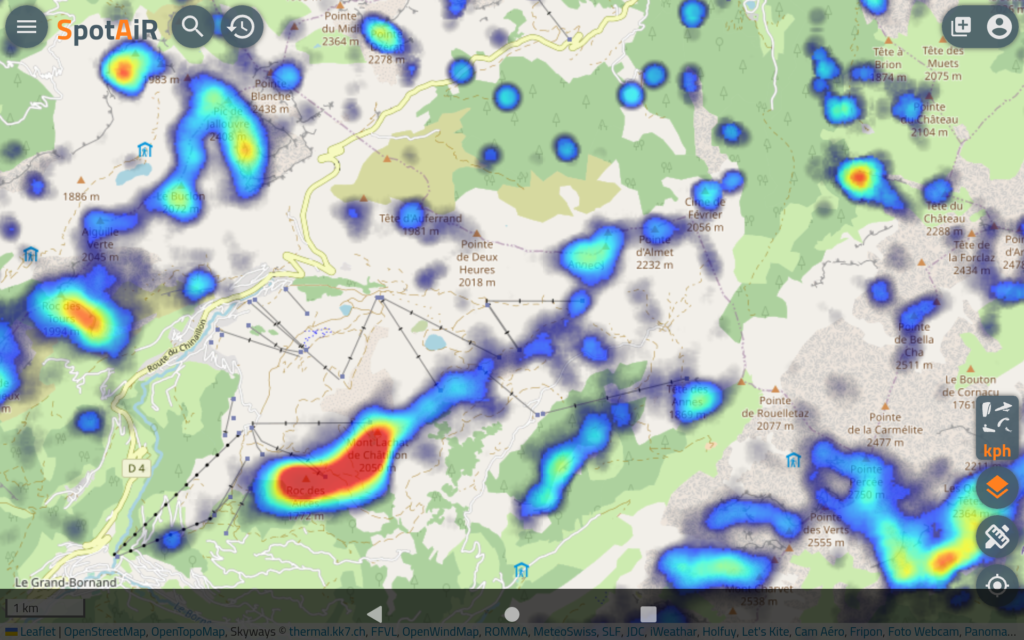
1/ To get the thermal hotspots
- Download the hotspots from https://thermal.kk7.ch/ when you have selected the region you want the hotspots from.
- Choose the wpt format and put that file in the waypoints folder of XCTrack.

- Read how to activate a waypoint file in XCTrack here.
- You will see the thermal hotspots as black dot on the map if you have activated “Display waypoints” in the Map configuration of the XC map or Task map widgets
2/ To have the thermal map directly within XCTrack:
- Choose the thermal map provider you are happy with:

- Add a new page to XCTrack layout. See how to add a new page in Menu/Preferences/Page layout
- Add the Webpage widget and use the URL of one of the map provider using thermal KK7 (see above the list). We would recommend Spotair. Read how to add the webpage widget and how to configure it here. Read below how to use Spotair with placeholders.
- Adjust the settings of the map to display only what you need. Reminder: swipe up to enter the webpage widget adjustment mode, save at the end your webpage adjusted.
Use placeholders in the URL instead of GPS centering
AIR³ has 2 cameras: front and back. Check AIR³ specifications for more details. So, you can take pictures or videos with Air³.
The back camera includes a high-sensitivity sensor that allows to take good pictures when the light is weak. The drawback of this high-sensitivity sensor is a “saturated” picture if you take the picture in light intense scenes or with a flash, if you are too close from the objects you are taking.
The are some workarounds: use the front camera, use the back camera with HDR mode.
This feature has been improved with AIR³ 7.3.
Yes! Of course.
Originally designed for flying, AIR³ is also an ideal tool for many other types of outdoor activities. Based on Android, it can run any Android application. This expands the possible uses without limit. If you need a robust instrument, very readable in direct sunlight, with a large autonomy, waterproof, with a very powerful GPS, etc.. AIR³ will meet your needs perfectly. AIR³ is a mix of GPS, smartphone, tablet, ruggedized for heavy use.
Different brackets have been designed to attach the AIR³ to different supports. For example, the paramotor base can be used to attach the AIR³ to a motorcycle handlebar and use it as a perfect navigation GPS.
Google maps app, OpenStreet maps app (OsmAnd) are for example two very good apps with navigation features and offline maps that will match most of navigation needs.
By default, the free version of OsmAnd allows you to download only 7 offline maps directly from the application. If you need to prepare your trip with more than 7 offline maps, you can either purchase an OsmAnd Pro license, which will allow you to download unlimited maps (and you will benefit from many other very interesting features), or you will need to copy the maps manually. Go to the Maps list on the OsmAnd website, select the map(s) you want to get. Extract the OBF file from the zipped file. Copy this OBF file to the OsmAnd directory: AIR3-7.3/Android/data/net.osmand/files/.
If you want to listen to music while driving, install your favorite music player and connect your headphones to AIR³ via Bluetooth or the 3.5 mm stereo jack.
The answer is YES!
However, you will need to use an eSIM card to convert the AIR³ into an eSIM compatible unit.
The eSIM.me solution has been successfully tested, click here.
With such eSIM card, where ever you go, you can easily get an eSIM profile to obtain an internet and/or a local phone number without the need of an additional physical SIM card.
Valid for AIR³ 7.3 or 7.3+, not 7.2.
AIR³ can be commanded through voice thanks to Voice Access.
To activate this feature:
- Go to Play store and type “Voice Access”. (you need a google account to access Play store)
- Install Voice Access
- Go to Settings/Accessibility/Voice Access to configure it. As it is most of the time the case, always allow permissions when requested.
- Enable Use Voice Access
- Enable Voice Access shortcut
- Click on Settings
- Click on Voice Access commands to learn about the available commands by category
Here are the most useful commands related to our needs:
- To switch pages, you can use “Scroll Right/Left”
- “Scroll down” allows you to enter into toggle map mode. You can then use “Scroll Up/down/left/right” to navigate.
- “Go Back” / “Again” are also pretty useful commands
- “Start Zooming” will magnify the screen. “Stop Zooming” will stop the magnification. Note that this is not similar as using the zoom button or the zoom widget of XCTrack.
- If you switch between two different apps (for example switching from XCTrack and XC Guide), make sure the 2 apps are running and use the command “Previous app” to switch from one and the other.
- “Show numbers” is a useful command depending on the app used. Then say “Tap + (the number)” and it is similar as clicking on that button.
- “Show grid” will split the screen into squares. You can then just say the number of the square or “Tap + (the number of the square)” to simulate a click on that zone. This can be very useful for zoom in/out or Previous/Next Waypoint widgets. Remember also that a widget can be hidden behind the map. Once finished, “Hide grid”…
A lot of AIR³ pilots are Apple minded. Before going AIR³, they are wondering if they will be able to use AIR³ and if AIR³ is compatible with their Apple computer.
AIR³ is based on Android, but you do not need to be familiar with Android to use AIR³. Unlike other flight instruments, AIR³ is based on current smartphone / tablet technologies. But to use it for flights, you don’t need to know all the ins and outs of Android. Once you get it, you turn it on and off you go flying.
There are many features that you can take advantage of, but you don’t need to activate them to use them.
AIR³ is compatible with any Apple computer just like an Android smartphone. That being said, it doesn’t really tell you if it’s compatible with your Apple computer.
Well, perhaps it’s important to remind you that compatibility between devices is done differently these days. Why is that? Because more and more we are using applications to let devices talk to each other, rather than trying to connect devices to each other with a cable.
For example, with a traditional flight instrument, if you want to load waypoints, share a task or route, upload your track to a competition website, etc., most of the time you need to connect your instrument to your computer by cable and then transfer these files to or from your instrument. With AIR³, most of these actions can be performed directly by connecting to the Internet. AIR³ is a computr by itself.
- To get a waypoint file, just go on the competition website with the browser, get the file on the web and save it in the right folder.
- To share a task, share it by whatsapp, by email, by Messenger or just share it through a QR code.
- To get your track, if you have set to automatically upload your track after landing, you can directly get your track on your Xcontest account either in IGC or KML format. If you have not automatically uploaded, just upload it in your cloud flights so that you can easily get it from any computer.
If you still want to connect the AIR³ to an Apple computer, the easiest way is to use an application based on your local network. You will then see the AIR³ as if it were connected by cable.
You can either create a route manually in Menu/Navigation/Competition task, adding one by one the different turnpoints you want to follow, or create a route easily on a webpage (on a map) and then transfer it to AIR³/XCTrack through QR code.
Watch the tuto video related to that topic in the Videos tuto page. The video shows both methods.
XCTrack Pro is delivered preconfigured with different profiles (see AIR³ Manager).
However, you may want to change the interface according to your preferences. You can remove widgets, add widgets, resize widgets, change widget configuration. Read more details in the customize page of the XCTrack Pro Manual and the XCTrack Pro Widgets Manual.
Watch also this short video:
AIR³ is equipped with a performing GPS. However, you may experience some problems to get a good GPS signal in certain cases. Here are a few hints to discover why you would have faced such issue.
- Be sure to try to obtain a GPS position (once the satellites are received correctly) outdoors. A roof above you can affect satellite reception.
- The first thing to check is that you have location enabled. Swipe from up to down to get the main icons. Make sure the location icon is enabled
- The second thing to check is your time zone. The system will attempt to find satellites based on time zone and exact time. Go to settings/system/date & time and check the set time zone. Select the correct time zone by turning off “Auto Time Zone” if it is not set correctly. Once the correct time zone is set, make sure to enable “Auto Time Zone”.
- The third thing to check is the right time. The best way to set the correct time is to connect the device to Internet so that it can synchronize with a time server. Make sure to “Use network-provided time” in the date and time settings and make sure you have access to Internet (either with a SIM card or by connecting to Internet via Wifi ( via your phone’s hotspot for example if no wifi network is found)). Even a small time difference can delay very much the satellites detection.
- Once the time zone and time are set, launch the app “AndroiTS GPS test” (GPS fox for AIR³ 7.2). Select the list of satellites page to have a clear view on the satellites reception. Wait until you can see a green “ON” on top. Then close this app and launch XCTrack.
- The first time the unit tries to know where it is, it can take more time. This is called “Cold start”. Cold start is strongly reduced if you are connected to the network. If you have no internet, this is not a problem, but note that it can take more time to locate the first time.
- GPS antenna should not be covered. Check that nothing is altering the signal received by the GPS antenna. Here is an example of a metal sticker that reduces the GPS signal received by the antenna.
If you still face issues after following these recommandations, send us a small video through whatsapp showing 1/ the settings of Android Date and time, 2/ the page with the list of satellites in AndroiTS GPS test app (allow minimum a couple of minutes without any shade above you).
By definition, an option is not necessary. However, options are available in case you want to take advantage of specific features. You can find all options here: http://shop.fly-air3.com/shop/category/air3-19.
Check the accessories page to know more about each option.
To know more about Fanet, Flarm and Livetracking, check this FAQ…
AIR³ 7.3+ has an integrated Fanet and Flarm module. To enable it for flying, you can either enable it with XCTrack, or with XC Guide.
WARNING: the module should be activated ONLY with XC Guide or with XCTrack. NOT both. The easy way is to enable it in XCTrack. In this case, make sure that it is not activated in XC Guide if you are using XC Guide in parallel.
You could also activate the module in XC Guide and then have XC Guide transmit the information to XCTrack through TCP, but this requires more complex settings.
So, to activate the module:
Once the module is enabled, a new line appears with the validity of the Flarm licence as well as the Fanet/Flarm ID. Check how to freely upgrade the FLARM licence through XC Guide in the XC Guide specific AIR³ features page.
FANET and FLARM ID are sent every second. The pilot name (Menu/Preferences/Pilot/Username is sent every minut. The type of aircraft (Menu/Preferences/Aircraft/FAI class) is sent together with the other data communicated through the module.
Note that a GPS fix is required to work properly. Fanet&Flarm data are sent once the pilot is considered as flying.
If you want to test the module without flying, check this FAQ.
At any time, you can check if the FANET & FLARM module is enabled by looking into the info window.
FANET and FLARM ID are sent every seconds. The pilot name (Settings/Connected devices/FANET & FLARM settings/Your name on FANET) is sent every minut. The type of aircraft ( Settings/Connected devices/FANET & FLARM settings/Your aircraft type) is sent together with the other data communicated through the module.
Note that a GPS fix is required to work properly. Flarm data are sent once the pilot is considered as flying.
If you want to test the module without flying, check this FAQ.
WARNING!
Flarm licence has to be upgraded every year for free.
Read more details about XC Guide specific AIR³ features here.
AIR³ is provided with a version of XCTrack Pro with Livetracking features. To use this feature, you need to have an active internet connection (Ideally through a SIM card, but also through Wifi (data sharing through your mobile phone or Bluetooth).
You can of course see other pilots using XCtrack livetracking on the map, but you can also see other pilots using other livetracking technologies, directly on the map. For more info, read this FAQ.
You will be seen on the XContest Live page of course… but you can also be seen on Open Glider Network. For more info, read this FAQ.
So, the very first thing to check is that you have an internet connection. Go to Menu/Preferences/Pïlot and click on “Login to Xcontest”. Your status should be “Logged in to Xcontest”. Alternatively, you can also test to send a message through Whatsapp, open the browser to try to reach www.fly-air3.com.
Note that if you have just installed a new SIM card, you may need to configure an APN (Access Point Name). Go to Android Settings/Network & internet/Mobile network/Access Point Names and click on the plus sign to add the APN. You should get details about how to configure the APN from your mobile network provider.
First, make sure to enable Livetracking in Menu/Preferences.
See more details about Livetracking settings here.
Not successful? Troubleshooting…
In order to identify what may going wrong if you are not successful, check the different info that can be obtained thanks to the Status line widget in the System section of XCTrack Pro widgets manual.
You may face other issues:
1/ No Livetracking menu in Preferences.
2/ I have an active internet connection but Livetracking is not working.
1/ No Livetracking menu in Preferences.
The Livetracking feature is available in the new version XCTrack. This means that if youhave installed an old version of XCTrack, you may have a version without Livetracking.Install a recent version of XCTrack.
2/ I have checked that I have an internet connection working, but I still can’t enableLivetracking.
Most probably, you are not logged into XContest. Check in Menu/Preferences/Pilot your details that should correspond to your Xcontest account. Make sure you are logged into Xcontest before trying to enable livetracking.
XCTrack contains a “Weak lift indication” feature. If you fall down in calm air by 0.9 – 1m/s but, while flying, you are only falling down by 0.2 m/s, this means you are flying in air mass going up… This is indicated by the double beep vario sound. you can disable it by turning off the “Weak lift Indication volume” in Menu/Preferences/Sound/Acoustic Vario.
Read more details about settings in Menu/Preferences/Sound/Acoustic vario
Watch this short video regarding the weak lift vario sound
The Livetracking of XCTrack is a great feature to see, be seen and communicate with others. XCTrack runs on Xcontest LIVE platform.
There are many Livetracking solutions available. XContest Live is probably the most advanced with the largest number of pilots using it.
However, only pilots that are using XCTrack will be displayed on the map unless you use one of the hereunder described methods.
Internet and/or radio module
In order to be seen or see others on the map, you can either use an internet connection, or use an equipment that sends and receives these data through an integrated radio module. This is the case with Flarm and Fanet devices.
FLARM’s main goal is to avoid collisions between aircrafts. FLARM stands for Flight Alarm.
FANET’s main goal is to provide Livetracking features without the need of internet network. FANET stands for Flying Ad-hoc Network.
Livetracking through internet, Flarm, Fanet, ….each solution has its pros and cons. AIR³ 7.3+ has all the Pros of each solution.
To be seen …
First of all, to understand the ins and outs of each solution, we need to differentiate the “see others” from the “to be seen”. In both cases, the time occuring between 2 sets of data informing about the position of each aircraft around should also be taken into account to differentiate the solutions available.
As long as Flarm’s main goal is to avoid collisions , a lot of devices such as AIR³ 7.3+ are able to transmit Flarm data (Flarm Tx).
AIR³ 7.3+ is able to communicate its position to others both through internet and through an integrated radio module (this means even without internet available), both to FLARM and FANET devices.
Through internet, it will be seen by others depending on the configuration: Xcontest Livetracking, OGN, Livetrack24, SportstrackLive,…
The easiest way to be seen by many Livetracking platform is to run XC Guide and configure it accordingly. See more details in the XC Guide specificities for AIR³ page.
If you want to be seen on OGN network, visit the FAQ related to that topic.
See others …
Flarm devices and others (OGN – Flymaster – Livetrack24 – XC Globe – Fanet,…) can be seen on the map of XCTrack Pro during the flight with any AIR³ (not only 7.3+) via XC Guide and an internet connection.
AIR³ 7.3+ is also able to see FANET and Flarm (V2) aircrafts from its integrated radio module.
Note that you will only see other aircrafts if you have activated the “Display nearby pilots” in the map configuration of XC map widget in the Xcontest widgets page or the task map widget in the competition widgets page.
To be able to see others via XC Guide requires an internet connection. This can be obtained either through your SIM card (mostly recommended because it doesn’t require any concern before take off) or by sharing your phone’s internet (hotspot) through WIFI or Bluetooth. Without the need of a Flarm receiving device, this method allows you to get all aircrafts around you on XCTrack map.
Watch a video tuto that shows how to configure XC Guide and XCTrack in the videos tuto page.
Configure XC Guide, XCTrack and AIR³ Manager as described in the XC Guide page.
You can set what you want to display (filters) on the map by changing the settings in XC Guide. Note that XC Guide has to run in the background to let XCtrack get the info to display.
OGN will display the following livetracking pilots:
- Aircrafts using a Flarm
- Flymaster livetracking (to be confirmed)
- All aircrafts using an OGN tracker
- Garmin Inreach
- Spot
- Fanet
- PilotAware
- Spidertracks
In addition, you can configure XC Guide to also display the following livetracking pilots:
- Livetrack24
- Skylines
- Flymaster groups
- Airwhere
- XC Globe
- SPOT & Garmin inReach
We pre-install many maps and elevation files to make AIR³ ready to fly.
It’s easy to free up memory. Just go to /XCTrack/Map/RoadMap for AIR³ 7.1 and 7.2 or /Android/data/org.xcontest.xctrack/files/Map/RoadMap for AIR³ 7.3 and delete the maps you do not need. You will quickly get a lot of free space ! Watch the video on maps and elevation files to quickly get acquainted with these topics.
Read more in Menu/Preferences/Map details about RoadMaps and terrain in the XCTrack Pro Manual.
Alternatively, you can also get a 128 Gb SD-card with pre-installed maps of the world .
If you have lost your AIR³ or if it has been stolen, you can maybe find it back depending on what you have done when you received it and if you have inserted a SIM card or not.
As an Android tablet, you can set a Google account. Make sure to enable location history.
By logging in your Google account, you have two easy way to find your device (if the device is connected to internet):
- https://www.google.com/android/find allows you to quickly find where your device is, play a sound or secure your device (Lock device and sign out of your Google Account. You can also display a message or phone number on the lock screen).
- https://www.google.be/maps . Go to the burger menu while connected with your account and click on “Your timeline”. You can see the latest place saved with the device.
As an Android device, there are also many other ways to find your device. You can install an app such as “Wheres My Droid” that can be used for that purpose.
If you have inserted a SIM card, you can also just simply send a text message or call your device. There are many ways to find it back.
With AIR³ 7.2, just click on the emergency button (bottom). With AIR³ 7.3, click and hold F1 and click F2. The first time you activate the emergency, you will reach the Emergency information window within Android. If you want to reach this window without activating the button, click to enter the settings. Then type “Emergency” in the “search settings” window. Alternatively, you can also go to Settings/About tablet/Emergency information.
Add your name and any useful information such as your blood type. Add a contact of the person that is supposed to get the message in case of emergency. You can add other contacts if you want more than one person to receive the message in case of emergency.
You can even use AIR³ as a power supply to charge your phone.
For example, if your phone requires USB-C, use a USB-C to USB-C cable …. or use the small white USB-C/USB-A connector provided to use your regular USB-A to USB-C cable. Start AIR³, exit XCTrack if it starts automatically and turn off the screen with a short press on the power button.
The following instructions are valid for XCTrack and XC Guide. AIR³ Manager won’t upgrade automatically through Play store.
As mentioned in the Software upgrade instructions page, you can upgrade apps manually (watch the video), or automatically via Play store. It may happen that the Play store version is not as recent as the version provided on our server. However, some pilots may prefer this process to be done automatically, even if it does not provide the latest version.
For XCTrack, we recommend that you join the beta program of Xcontest to automatically get the latest version of the XCTrack beta channel, so that the version is the closest to the one provided manually.
Joining the beta program of XCTrack
Click on the link here once you have logged into your Xcontest account. Read also below how to join the beta program on Play store.
Configure a Google account on AIR³
Make sure you have set up a Google account on the device. If you haven’t already, click on the Play store icon and sign in.
Once Play store is launched, search for “XCTrack”.
Click on XCTrack to see the details. Scroll down to “Join beta”.
The following instructions are valid both for XCTrack and XC Guide. Replace “XCTrack” by “XC Guide” in the following instructions if you want to apply them for XC Guide.
Enable auto-update
If XCTrack is not the latest version, click on “update” to update the app. Click the 3 dots in the top right and make sure “Enable auto update” is set.
Repeat the same operations for XC Guide to get automatic update of XC Guide.
Make sure General auto update is set
In Play store, click on your icon in the top right, click on settings.
Click on Network preferences. Make sure that “Auto-update apps” is not set on “Don’t auto-update apps”.
You are all set. When a new version of XCTrack or XC Guide becomes available, once AIR³ is connected to internet, the new version will automatically be downloaded and installed.
Note that this automatic update is not available for AIR³ Manager.
With old flight instruments, you had to connect the instrument to your computer to get your track.
While you can still do this in the same way (see the quick video showing how to convert your USB connection for file transfer), there are easier solutions with the new generation of instruments.
First of all, make sure that you are registered in Xcontest and that you have connected XCTrack to your Xcontest account (Menu/Preferences/Pilot).
If you have connected the AIR³ to the internet (e.g. for live tracking), your track should be automatically uploaded to your Xcontest account when you land (if you have not changed the default configuration). If the track has not been uploaded automatically, you can still upload it at any time when the Air³ is connected to the Internet. (Menu/Tracklogs/).
Otherwise, if you have installed a communication application such as Gmail, Whatsapp, Telegram, Messenger, Google Drive, etc., you can use it to transfer the track (IGC file), including yourself… Click on the “Share” widget at the top right, which will list the available communication applications installed.
If you want to return the device to its original state when it was new, check this FAQ.
AIR³-XCTrack is preconfigured with ideal settings, according to its specificities. AIR³ Manager communicates with XCTrack to set it ideally.
Maybe you have made some changes to the interface or to other settings but you actually prefer to use back the default settings. You can reset it with AIR³ Manager.
When new features become available in XCTrack, a new version of AIR³ Manager allows pilots to take advantage of the specific way to use these new features throughthe reset available in AIR³ Manager.
Check how to reset XCTrack to its default settings in the AIR³ Manager manual.
If you want to be able to get back your previous settings/layout, don’t forget to first export your configuration.
First of all, DO NOT MAKE A FACTORY RESET! A factory reset will erase many information, including the XCTrack Pro licence (as well as all maps and terrain that will take a lot of time to reinstall).
So, here is a list of items that will allow you to set it back as it was originally:
- Remove your Google account: settings/accounts/ click on your account, then click on “Remove account” and confirm.
- Remove all apps that have been installed. Keep your finger on the app, then click on the (i) to open the APP info. Click on Uninstall. If you can’t uninstall, this means this is a system app that can’t be uninstall.
- Use Files app to browse the files stored on the unit. First check XCTrack subfolders. You may want to remove all tracklogs of your flights (igc files). Airspaces, Config, Log, Tasks and Waypoints may also contain files that are directly linked to your use of the unit. Check also Images, Videos, Audio, Documents and Downloads for possible files you may want to remove. Click on Gallery to check if any additional files are seen with this app.
- Use Contacts to check that you have not added your own contacts you may want to remove.
- Use Email to check that no messages are still available.
- Use AIR³ Manager to reset XCTrack interface as described here.
- Make sure there is no SIM card and/or SD card left in the unit.
Adaptive brightness is a very useful feature of AIR³ 7.3. It greatly increases autonomy. When the device is exposed to more light, the screen adapts and becomes brighter. When the device receives less light, the screen automatically decreases the brightness and thus reduces power consumption.
However, you can disable this feature (for example if the upper left part of the device, where the light sensor is located) is shaded but there is a lot of light on the screen.
This can be done temporarily or permanently.
Temporarily:
Click F1 or F2 (or any of the on-screen brightness widgets) to force the brightness level (higher or lower). This will temporarily disable adaptive brightness. Each click will increase the brightness by 10%. On different events such as start of thermal, end of thermal, … XCTrack is configured (automatic actions) to revert to system setting, so with adaptive brightness enabled.
Permanently:
To remove this adaptive brightness during the whole flight, Go to Android Settings/Display and deactivate “Adaptive brightness”. Set the default brightness level you want to achieve (e.g. 70%). Start XCTrack. The brightness level will start with the default brightness level you set (example 70%). You can change the brightness level during flight by clicking F1 or F2 (or the on-screen brightness widgets) to force a different brightness level. Each click will increase the brightness by 10%. On different events such as start of thermal, end of thermal, … XCTrack is configured to return to the system setting, so with the default brightness level (for example 70%).
Depending on your eyes, you may want to display cities with bigger font.
This is how to proceed:
- Download the Hyperpilot custom xml file here. If you download it from the browser of AIR³, keep your finger on the file for more than one second and select “Save link” in the contextual menu. Make sure the file ends by .xml
- Copy the xml file in XCTrack/Map folder. With AIR³, use “Files” app to browse the content of the unit. In Downloads folder, select the xml file and use the menu to “Copy to”, browse in the XCTrack subfolders to reach “Map” and click on “Copy”.
- Open XCTrack Menu/Preferences/Maps/Roadmap/Map theme and select “Custom file”
- Select the Hyperpilot custom file you have just copied in the Map subfolder of XCTrack and click on select in the bottom.
- That’s it. Villages, towns and cities are now displayed with a larger font.
A large number of pilots think the only way to have a good readability is to increase the nits (~ brightness) or to use a eInk screen (black and white). The most important factor is the angle of the screen with the look (perpendicular) and not the nits/brightness).
Read more details about best brightness setting in this FAQ.
Read more details about link between brightness, readability and autonomy in this FAQ.
By default, your contacts will not sync unless you install an app that will allow to sync them.
You can either find the Google contacts sync on APKmirror or by following this link.
Use the app corresponding to your Android version.
If you want to test the Fanet&Flarm signal with another device, here are a couple of information to take into account:
- A GPS fix is needed in both devices
- On AIR³, you should enable Fanet/Flarm Module ONLY in XC Guide OR XCTrack but not both. Restart the device if you have enabled the module with the two apps as it may be blocked.
- Both devices need to be considered as flying to transmit.
- When some devices send both Fanet and Flarm, only Fanet is taken into account by the receiving AIR³
- Make sure to use the latest version of firmware and apps.
If you want to make some tests to understand the ins and outs, while not flying, you should first start with XC Guide. XC Guide provides more information about Flarm and Fanet, so that it is more easy to understand the ins and outs.
To test the module with XC Guide:
- Quit XCTrack and/or make sure the Fanet/Flarm module is not enabled in XCTrack (for more details about how to enable or disable the module within XCTrack, check this FAQ).
- Enable the module in XC Guide (for more details about how to enable or disable the module within XCTrack, check this FAQ). Select the right module (V1 or V2)
- Make sure the Flarm/Fanet module is activated and working in the info window of XC Guide
- Make sure to use the latest firmware of the Flarm/Fanet Module (AIR³ 7.3+ V2 should use build 102 or up). Check here how to update the firmware.
- Activate the “Always in flight mode” in Settings/Connected devices/Fanet&Flarm settings/
- Check that Flarm Rx and Tx is enable in Settings/Connected devices/Fanet&Flarm settings/
- Check that Fanet is set to detect all pilots in Settings/Livetracking/Fanet
- Check in the XC Guide page the other devices detected. In the following screenshot, the following devices have been used for the test: Skytraxx Beacon (Fanet Tx-Rx, Flarm Tx), AIR³ 7.3+ V1 (Fanet Tx-Rx, Flarm Tx), AIR³ 7.3+ V2 ( Fanet Tx-Rx, Flarm Tx-Rx), GXAircom (Set to only receive and transmit Flarm). The screenshot is taken on the AIR³ 7.3+ V2.
Here is an example coming from GXAircom listing the different devices detected (set to only receive Flarm).
Once the tests have been successful with XC Guide, you can disable the module in XC Guide and test with XCTrack. Check this FAQ to know how to disable the module in XC Guide and enable it in XCTrack.
Here are some advices to make sure you are testing it correctly within XCTrack.
- First of all, make sure you have activated the XCTrack livetracking, so that you can easily observe that you are considered as flying when “Live” is green in the status bar.
- In XCTrack, set the landing detection to “No detection” and set the takeoff detection to 1 km/h in Menu/Preferences/Automatic actions.
- Once both units (receiving and transmitting units) are set, move a little bit to activate the takeoff. Use an XCTrack map that displays “nearby pilots”.
Remember that both units have to be considered as flying.
If you are not satisfied with the volume of the vario, you have most probably made one of these 2 errors: velcro on the speaker or the volume is not set properly.
Velcro
In the first steps page and instructions of the Quick user manual, we give instructions how to set the Velcro if you are not using a Base.
If you place the velcro as you can see in the following picture, you will definitely get the sound muted by the velcro:
Set the volume to maximum (100%)
You can set the volume of the vario in Menu/Preferences/Sound/Acoustic Vario/Volume. The percentage corresponds to the percentage of the system volume. This means that if you set the volume on 50% and the system volume is 50% of the maximum, you will get 25% of volume. Set the volume of the Acoustic vario to 100% to get the highest level of sound if you are not satisfied with the volume. In order to make sure that the system volume is maximum, please make sure to enable “Turn up the volume on startup” in Menu/Preferences/Sound/Automatic volume/ and set the “Pre-set master volume” on 100% .
Read more details about settings in Menu/Preferences/Sound/Acoustic vario
Yes. AIR³ is an Android tab/phone. Any Android app compatible with the android version of AIR³ will be compatible with AIR³
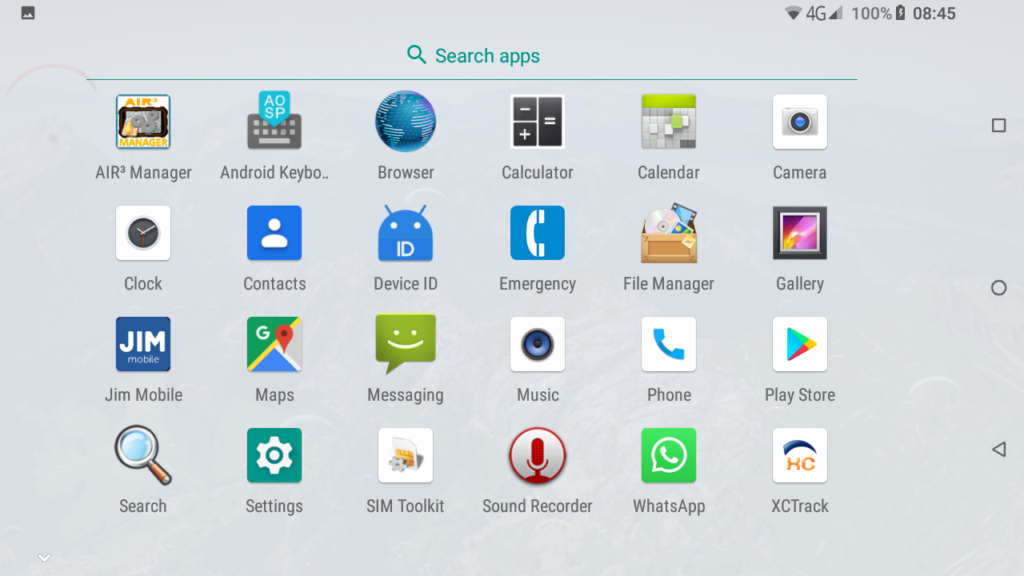
There is no problem with AIR³ 7.1 and AIR³ 7.2.
With AIR³ 7.3, the technology is different. There are different technologies used for polarisation.
With some polarised glasses, if you use AIR³ in portrait mode, there will be no problem; in landscape mode, the screen will be darker. With other polarised glasses, there will be no problem. So, the only way to answer correctly is to test the glasses with the AIR³ 7.3.
Yes, AIR³ is also a flight computer that computes all the info required to optimize your flight during competition. With a version of XCTrack > 0.6, AIR³ generates an IGC file that corresponds to the FAI standards and therefore belongs to the instrument accepted for FAI category 1 competitions.
See XCTrack in the list of instruments of the FAI instruments list here.
Watch the Competition video tutorial
You can also find more information about competition in the competition section of the Menu/Navigation page of XCTrack Pro Manual, as well as in the details regarding Competition widgets in the Competition subsection of the XCTrack Pro widgets Manual.
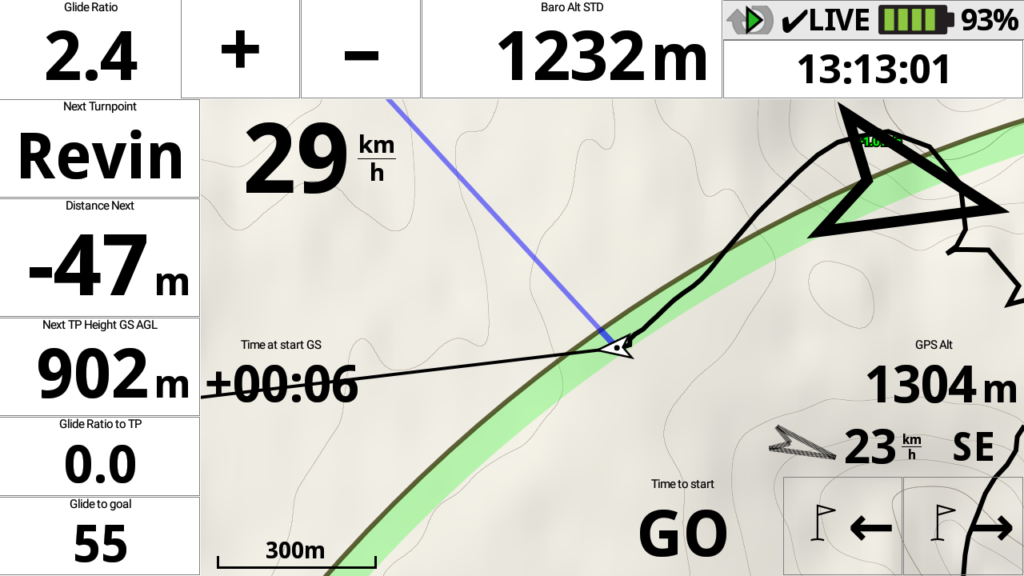
After the start, the green light tells you that you can “GO”
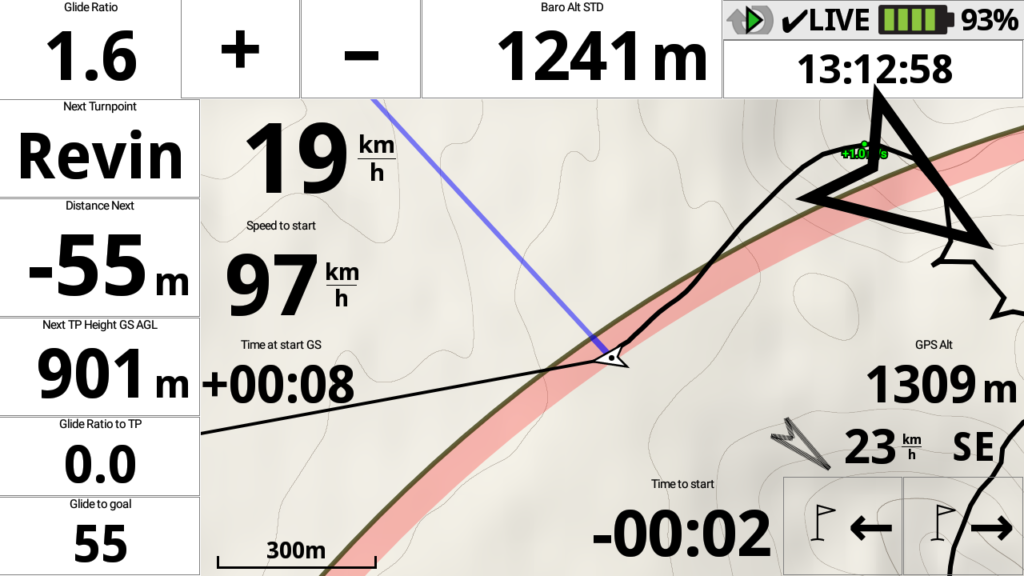
Before the start, you can check the speed required to reach the start line and the remaining time before the start
The automatic zoom will let you check at any time your position towards turnpoints, zooming in when you are approaching the turnpoint, zooming out when necessary.
At any time, keep an eye on the remaining distance to the goal, the glide ratio required to the goal and the glide ratio to the next turnpoint.
Once approaching the goal, keep an eye on the altitude over goal to optimize your score.
Yes. AIR³ is preconfigured with a customized and improved version of XCTrack Pro. It includes a perpetual license of XCTrack Pro. AIR³ is also preconfigured with all the Maps and all the Terrain files of the main countries where it is shipped. You can add easily more maps and more Terrain should you need other regions. Read more in Menu/Preferences/Map details in the XCTrack Pro Manual.
Check the video here how to install additional maps and terrain.
Alternatively, you can also get a 128 Gb SD-card with pre-installed maps of the world.
This SD card contains maps of every country in the world. When you travel to a new country, simply copy the corresponding country into the XCTrack subfolder. Watch this video to find out how.
Yes, who can do more can do less. With the KISS configuration (Keep Interface So Simple), AIR³ is just providing the most needed features once a pilot start requiring his first vario. Through his evolution, the pilot will benefit from the other powerfull features by just using the “Easy” config file or the “Expert” configuration provided with AIR³.
For more details about Flarm, Fanet and Livetracking, check this FAQ.
The Flarm module integrated in AIR³ 7.3+ is using 868 MHz data communication frequency currently.
The Flarm module integrated in AIR³ 7.3+ V2 uses all frequencies used by Flarm worldwide. The module selects automatically the right frequency.
868.2-868.4 MHz (Europe, Africa)
869.2 MHz (New Zealand)
902-928 MHz (North America)
916.2 MHz (Israel)
917-926.6 MHz (Australia, South America)
Yes. AIR³ is using a performing barometer sensor from Te connectivity to determine the altitude and the altitude changes. It can detect an altitude change of less than 10 cm per second.
In case you face an issue with your device, here are some comments to take into account.
We receive a lot of support questions that are user related and that can be solved easily. So, when you contact us, please make sure to comply with all the requests indicated here below in the “Before contacting us” section.
1/ Before contacting us
- Do not make a factory reset. Factory resetting the device will erase everything, including the XCTrack Pro licence, maps, terrrain files, etc. If you absolutely need to make a factory reset, contact us to get the procedure first.
- In order to avoid any concerns related to an incorrect configuration, the first things to do are
- Export your XCTrack configuration (pages only). Check here more details how to export. This step allows you to import back your configuration afterwards.
- Update XCTrack and AIR³ Manager. Check here how to upgrade. This step is important to make sure the issue you are facing has not already been solved in a more recent version of the app.
- Reset XCTrack configuration. Launch Air³ Manager, go to the menu /XCTrack interface/, click on reset. Check here how to reset XCTrack interface. This step allows to make sure that the issue is not linked to a change you have made to XCTrack configuration. By using the default configuration of AIR³, we eliminate all possible errors coming from a wrong configuration.
- Restart XCTrack. Make sure to quit XCTrack from XCTrack menu.
- Test without doing any customization to check if the problem still appears.
- Note that there is full online manual available here: https://www.fly-air3.com/en/support/air3-xctrack-manual/ . This manual is online and therefore indexed by Google. Most of the time it is very easy to get to the right page by searching for some answers directly with Google. We strongly recommend that you read the instructions related to the problem you are having to make sure that it is not just a problem of understanding how things work.
- It is strongly recommended to read the faqs and watch our tuto videos here: https://www.fly-air3.com/en/support/ . There are many specific issues that are addressed in our FAQ. Have a look to make sure the issue has not already been addressed. Some people prefer to watch videos rather than read instructions. Check out our videos, which cover most of the questions you might have.
2/ Contacting us: IMEI + Video
If the problem is not solved while you have followed the previous advices, contact us through Whatsapp or telegram (+32495249656).
When you contact us, please provide us with your IMEI, your model (7.1, 7.2, 7.3, 7.3+, …) in order to let us identify your unit, and a short video describing the problem.
Check here below more details how to find your IMEI.
IMEI number can be found:
- on the box of the device when you bought it
- on the back of the device
- in Settings/About device/IMEI (depending on Android version, you may need to find it in Settings/System/About device/Status)
- in XCTrack Preferences/About XCTrack by clicking on the XCTrack version and then scrolling down.
- If you still can’t find your IMEI but found the MEID, please provide it to us (MEID is the same as IMEI with missing last number).
To get quickly a solution, please show in your video all settings related to the problem that are set correctly.
A support request with a video clearly showing that all of these recommendations have been followed will be prioritized.
As indicated in the Bearing widget, it is important to understand Bearing and Heading. Heading is either determined by the internal compass (See Preferences/Connection & sensors) or calculated by XCTrack based on Bearing and wind if the internal compass is not enabled.
We recommend that you do not use the internal compass, but instead use your bearing and wind to determine your heading. Using the internal compass means that you need to keep it calibrated. A second reason is that there is a slight delay when the sensors calculate the heading based on the way the unit is held, i.e. tilted. On the other hand, the calculation of heading based on bearing and wind is instantaneous.
There is no way this can be garanteed. But AIR³ provides solutions to reach that goal. Watch this video to know how to get AIRSPACE and read more details about Airspace in Menu/Preferences/Airspaces
Airspaces information were traditionaly provided to the instrument through an Openair file. The AIRSPACE is continuously evolving through updates of the AIP (Aeronautical Information Publication). This means that Openair files should be regularly updated based on these updates.
In an Openair file, there are prohibited zones 7 days a week, H24, but there are also a certain number of temporary prohibited zones that are announced by Notam (notification to air man).
This means that a different Openair file needs to be produced every day according to the current situation.
There are different ways to let XCTrack use the right airspace. Read more details in Menu/Preferences/Airspaces.
XCTrack/Airspace/Web:
XCTrack can use airspace zones from http://airspace.xcontest.org automatically.
Choose countries in Menu/Preferences/Airspaces in the Web tab. Tap ‘’Refresh’’ .
Check this video to see how to get Airspace information of a given country.
Airspace activations are automatically checked upon XCTrack (re)start
Airspaces are computed automatically through a “notam analyser” in many countries.
AIR³ Manager/Openair file:
Openair files should ideally be produced based on a daily analysis of the Notam in order to humanly determine which airspaces are activated or not.
A group of pilots focusing on a given region should organise themselves to validate Openair files corresponding to their region and publish them on a Google Drive folder. Sharing that folder with the pilots that are interested, AIR³ manager can automatically download the latest Openair file published.
Air³ Manager will copy the airspace files in OpenAir format to the Airspaces directory of XCTrack as “Most_recent_OA.txt” and make a second copy in the directory. By choosing that individual airspace file “Most_recent_OA.txt” once for all, Air³ will automatically use the latest Openair file published on that shared folder without any difficuty.
Read more details in the Openair2AIR3 page and in the AIR³ Manager manual.
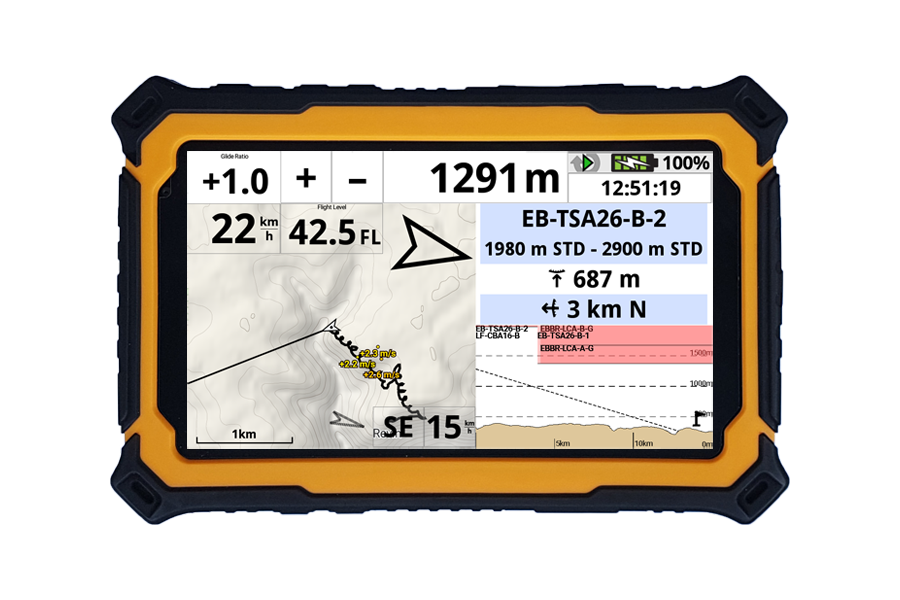
Here are most of the new or improved features in 7.2, compared with AIR³ 7.1:
- Vario, new pressure sensor: Te connectivity (Vs. Bosch)
- Android 8.1 (Vs. Android 5.1)
- Screen max brightness: 1000 nits (Vs. 400 nits)
- Deca core 2.4 Ghz (Vs. Quad core 1.3 Ghz)
- Ram/Rom: 4 Gb/64 Gb (Vs. 2Gb/16 Gb)
- Battery: 10.000 mAh (Vs. 7.000 mAh)
- Emergency quick button
- Easier to use physical button
Untill june 2024, all AIR³ 7.3 (plus and non plus) were delivered with Android 11. All these units can be upgraded with Android 13. AIR³ 7.3_A13 are directly delivered with Android 13.
The main hardware difference between all AIR³ 7.3 and all AIR³ 7.35 is the screen. AIR³ 7.3 have a 1000 nits screen, while all AIR³ 7.35 have a 2200 nits screen.
Read this FAQ related to AIR³ autonomy.
Another difference is that the AIR³ 7.35+ has an integrated antenna, whereas the AIR³ 7.3+ had an external antenna. As it is no longer easy to see a visual difference between the AIR³ 7.35 and the AIR³ 7.35+, the AIR³ 7.35+ has a “+” sign printed to the right of the power button.
Of course, as the Plus version also includes the Flarm and Fanet module, you can also check that the module is responding by activating it with XCTrack or XC Guide. Check this FAQ for more details.
The only difference is the Fanet/Flarm module inside the unit.
The consequences are:
- Both modules can transmit and receive Fanet.
- V1 can only transmit Flarm, not receive. V2 can do both transmit and receive Flarm.
- V1 could only use 868 Mhz, which means only EU. However, with the latest firmware upgrade provided in december 2022, the module can now also communicate on other frequencies for Fanet.
V2 can use the different frequencies, both for Fanet and Flarm.
Note that V2 can receive both Fanet and Flarm but, if a Fanet signal is received from a given pilot, the Flarm signal will be ignored as it would become irrelevant.
How to identify if the unit is V1 or V2? There is nothing outside that can differentiate a V1 and a V2. All units produced after november 2022 are V2. All units produced before that date are V1.
Read more details about enabling Fanet and Flarm module in this FAQ.
The AIR³ Manager is a small App developped to manage the basic features of AIR³ besides XCTrack. Look at the AIR³ Manager page and the AIR³ Manager manual.
What is the difference between AIR³ and a low cost phone or tablet on which I can install XCTrack?
If you have reached this page, it means you are headed in the right direction. But you are not there yet. XCTrack is the most efficient and ergonomic flight software. Now using XCTrack is one thing, the hardware that XCTrack runs on is also essential to have a good flight instrument.
Are there many pilots who only use their phone or tablet as the ONLY flight instrument? Probably not, here are some reasons (not sorted by importance) that differentiate AIR³ from such a solution.
- Readability is a key characteristic of a flight instrument. AIR³ has a very bright screen with up to 1000 nits. This gives the possibility of reading information even in the worst cases.
- A large majority of phones or tablets do not have a pressure sensor. Now, having a pressure sensor does not guarantee a good vario. The quality of the sensor is also important, as well as the way the system and the software are using the data coming from the sensor.
- AIR³ is a rugged tablet IP67. This means it is robust, shock proved, water resistant. As long you are very cautious, doing very soft landing and take off, etc, it may not be an advantage but if not, it is one for sure. The counterpart of this is that it is more heavy (strong material, rubber, protection, etc.) than usual instrument.
- AIR³ has a 7″ display, which allows to have very large widgets easily readable, very large Map on screen, etc. This is certainly an advantage, compared with a phone. Most tablets have a 8 or 10″ display. We beleive it is too large and unnecessary. 7″ is the ideal size.
- As explained on the base page, readability is key for a flight instrument. Increasing the brightness is solving only partially the readability of most devices and increase the energy consumption. A special base has been designed for the AIR³ form factor to put AIR³ right in front of your eyes for increased readability. The pilot will be much more satisfied with the readability of AIR³ compared with a phone or tablet. Check also our “readability matters” page.
- AIR³ is the only device sold with a perpetual licence of XCTrack Pro. This gives the opportunity to use certain widgets that are not available in the free version of XCTrack. The set of Pro features will increase in the future and will of course be available for AIR³ users that have a Pro version of XCTrack.
- AIR³ has easily accessible physical buttons to interface with the application. When wearing winter gloves, the interface with the touch screen function may become difficult. With the physical buttons, you can easily zoom in or out, change pages, change the waypoint to follow, increase or decrease the brightness, etc..
- AIR3 Manager is an additional app preinstalled on AIR³ that manages some basic features, including the way to choose XCTrack profile and theme (both applications are communicating with each other so that the user do not need to know all the different settings to change into XCTrack to change profile or theme). AIR³ Manager also offers a way to automatically download the latest openair file validated by the local group of pilots that are concerned by Airspace compliance. See this video that details the way AIR³ is managing AIRPACE.
- AIR³ is sold “Ready to fly”, preconfigured with 4 different profiles and 3 different themes. XCTrack is a very powerfull application but it is sometimes too complex for some users to take advantage of it. With AIR³, no need to learn all the different advanced features of XCTrack to take the best out of it.
- The autonomy of AIR³ is large with 10.000 mAh…It gives the opportunity to keep your phone battery,… and keep having the chance to use your phone once landed.
- AIR³ speaker and microphone gives you the opportunity to call or receive calls, keeping your hands on the breaks. (except to hang on or to execute the preconfigured call widget). Few tablets have the opportunity to use it as a phone. Being able to receive calls and make calls can be very usefull in many situations
- AIR³ 7.3 has a pogopin (magnetic) USB connector. If you need to charge the device in flight with an external battery, you can easily connect. In the event of a hard landing, there is no risk of breakage with the USB connector.
- AIR³ is sold through distribution. This mean that you should have the opportunity to test it before buying it if you are not yet convinced. Not sure which local distributor is selling the AIR³? Contact us. If there is no local dealers yet, take advantage of our “satisfied or refunded” commitment.
If the device recognises your SIM card and you can make calls/SMS (and receive calls/SMS), but you do not have internet, you may need to configure an APN (Access Point Name). Go to Android Settings/Network & Internet/Mobile Network/Access Point Names and click on the plus sign to add the APN. Don’t forget to save (top right menu) once you’ve set the APN details.
You should contact your mobile operator for details on how to configure the APN.
In the event of a rapid descent with a large change in pressure, you might feel a short moment with the sound of the vario, weaker than usual, while using AIR³ 7.3 or 7.3+. This is due to a significant pressure difference between the inside of the unit and the outside. The pressure will quickly equalize and the sound will return to normal, but sometimes this can take precious seconds. To avoid such a situation, you can open the USB-C cover in advance, so that the inside is not sealed and the pressure equalizes instantly.
AIR³ is provided with a perpetual licence of XCTrack Pro. The licence is linked to the device, not the pilot.
The perpetual licence is generated by a long file name (called Bootstrap file) located in the Bootstrap folder of XCTrack, ending by .xcbs.
That perpetual licence file is based on the IMEI number of the device and is linked to the product name registered in the system. In other words, the licence can only work with the specific AIR³ for which the Bootstrap file has been produced.
Here are a few comments related to the Pro licence mechanism, in case you experience difficulties with XCTrack PRO.
- The device name and product name should be AIR3
- The xcbs file (Bootstrap file) has to be located in the Bootstrap folder of XCTrack (it is case sensitive)
- The xcbs file is directly related to the IMEI number for which it has been produced, make sure to use the right xcbs file
- Check the date and time of the device. Wrong date and/or time may drive to Pro activation failure.
- Check the permissions given to XCtrack. If you are having trouble getting the Pro licence, check that XCtrack has permissions to do everything.
If you have accidentally erased the bootstrap file and you try to activate back the pro licence, here are a few comments to take into account:
- Layout change. First of all, XCTrack needs to recognize the file, check that it is related to the IMEI of the device and the name of the device. The xcbs file contains pages layout made for AIR³. If you see the pages layout that has changed after starting XCTrack, it means that the xcbs file has been recognized by XCTrack. This is the first important step.
If there is no layout change, it means that the xcbs file is not correctly recognised. Check the name of the file, check the extension “xcbs” and check the size of the file (it should be more or less 100 Ko). - Time check and GPS fix. Once the file has been taken into account, XCTrack licence mechanism will check the date and time of the unit and compare it with the GPS time. Therefore, the date and time has to be set correctly on the device (Check settings/system/date and time), the time zone needs to be set correctly and the unit needs to have a GPS fix (GPS time should be indicated in the widget “Time”). Once the unit has a GPS fix, restart XCTrack.
Note that the name of the xcbs file must remain exactly the same. Make sure you haven’t changed the name.
If you have checked all the previous points and still cannot get the Pro features within XCTrack, send us a video via whatsapp showing the various details explained hereabove, including the full name of the xcbs file. To view the full name, select the file, then click on the 3 dots at the top right and select get info. Add also a screenshot of the IMEI as obtained by XCTrack in XCTrack Preferences/About XCTrack by clicking on the XCTrack version and then scrolling down.
If, for some reason, you don’t have any xcbs file related to your device in XCTrack’s Bootstrap folder, first check your device’s root folder if you have a folder name that contains numbers. This number should match your IMEI. In this folder you should find the xcbs file. Just copy it to the Bootstrap folder of XCTrack. If you no longer have this folder containing the xcbs file (after a factory reset for example. Note that before performing any factory reset you must first save this xcbs file), then you must contact us to get a new xcbs file. In this case, you must provide us with your IMEI.
IMEI number can be found:
- on the box of the device when you bought it
- on the back of the device
- in Settings/About device/IMEI (depending on Android version, you may need to find it in Settings/System/About device/Status)
- in XCTrack Preferences/About XCTrack by clicking on the XCTrack version and then scrolling down. (*1)
- If you still can’t find your IMEI but found the MEID, please provide it to us (MEID is the same as IMEI with missing last number).
(*1) If you have a fresh firmware installation, you may need to give permission to the phone for XCTrack in Settings/Apps (click on XCTrack and check Permissions).
